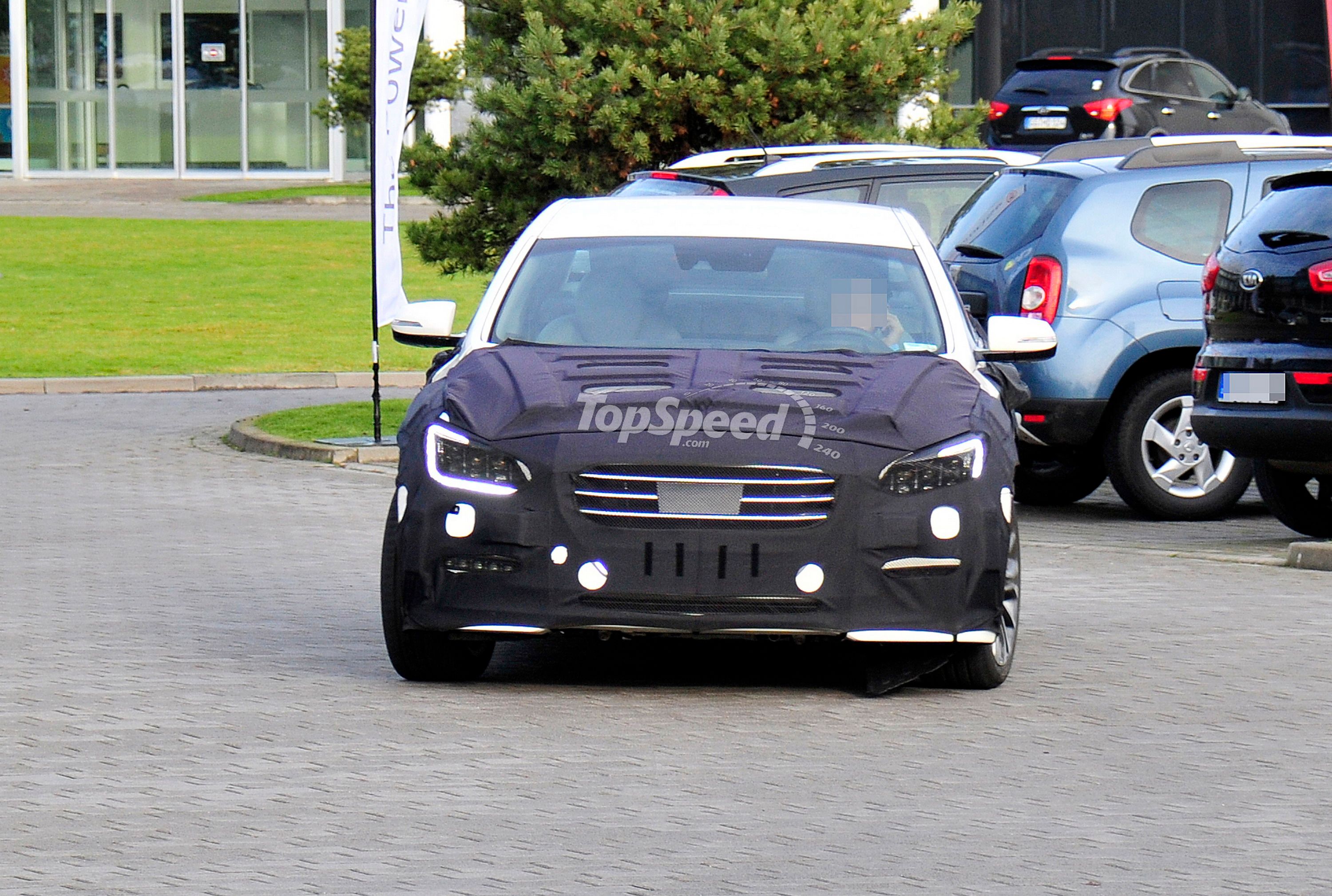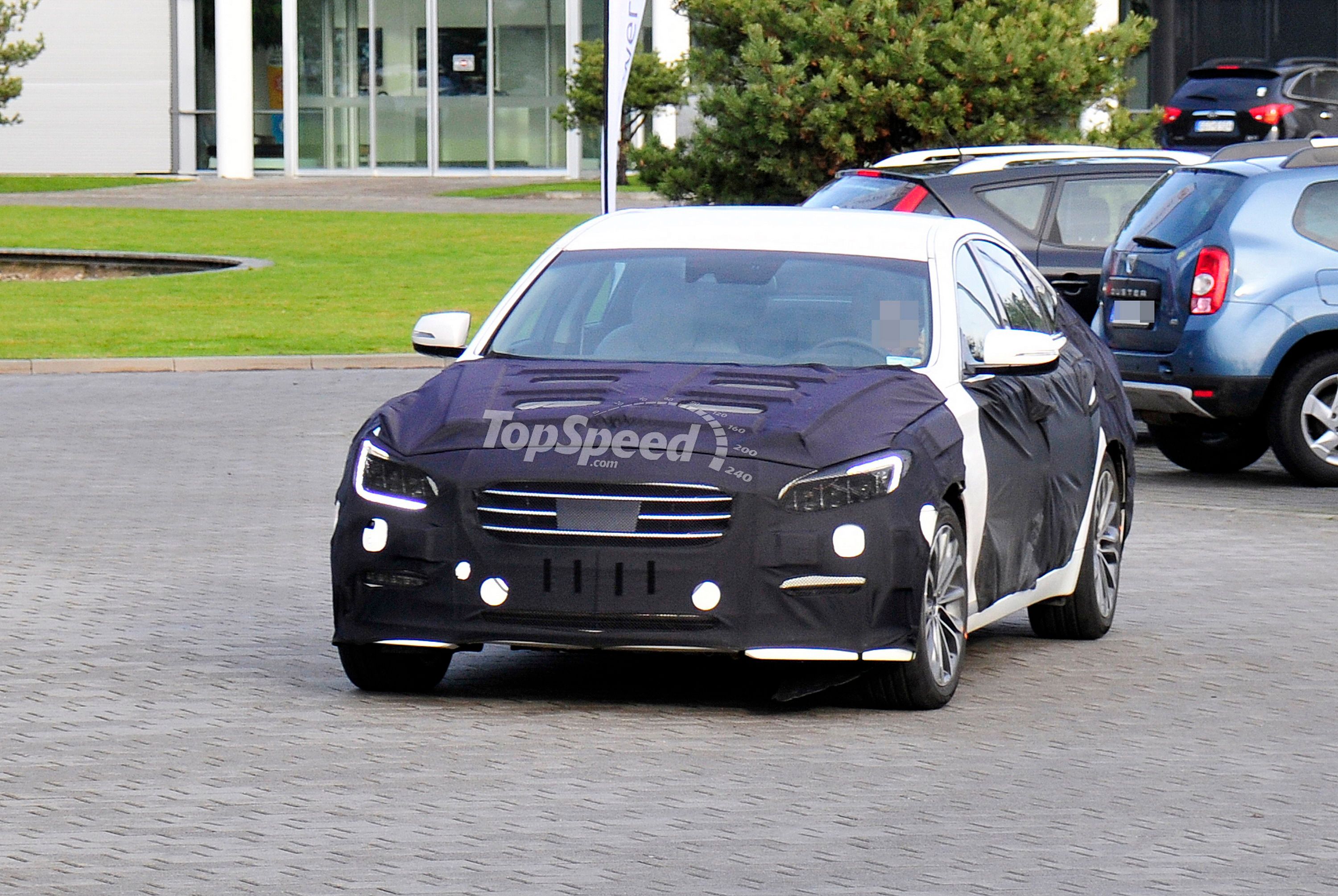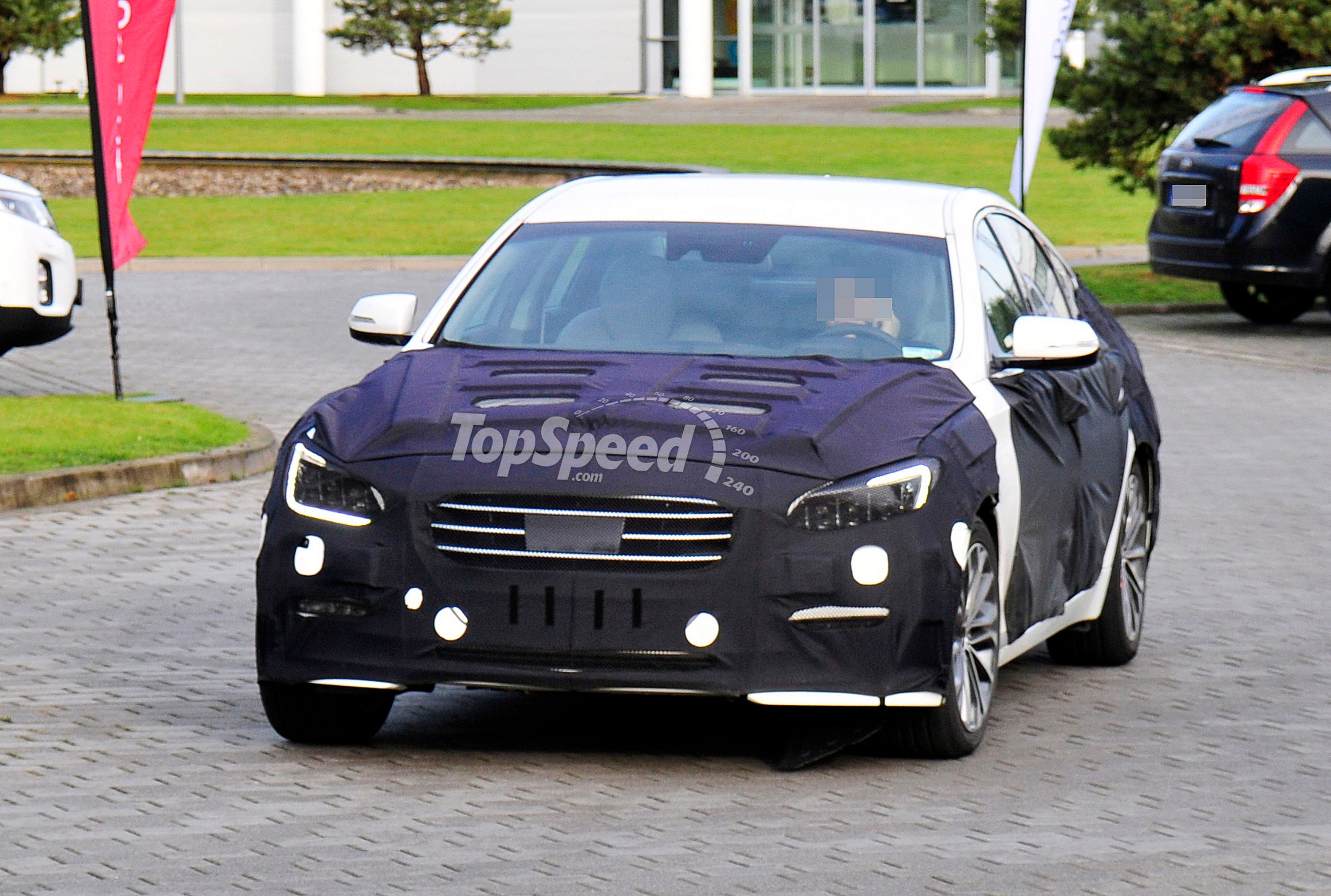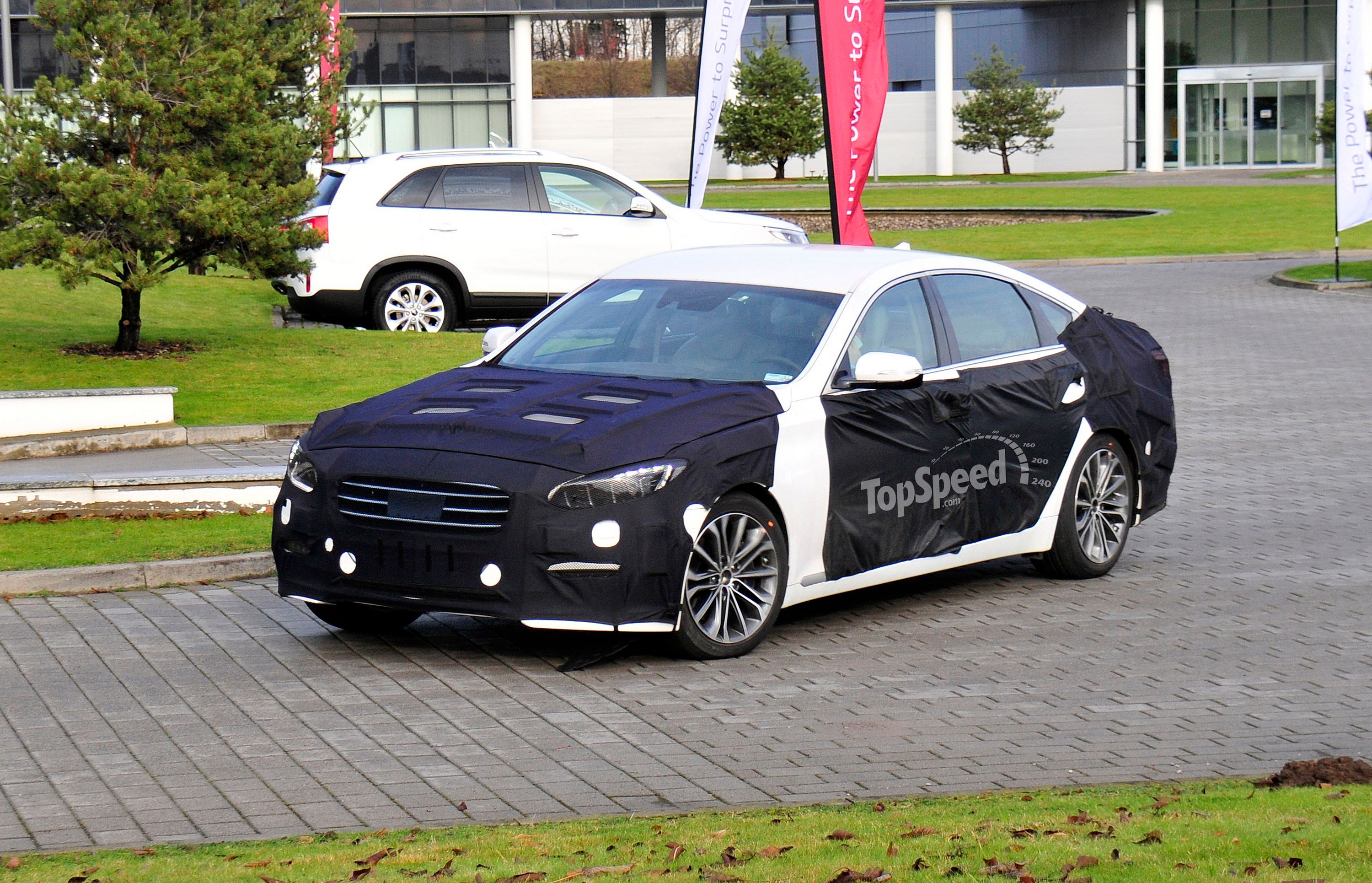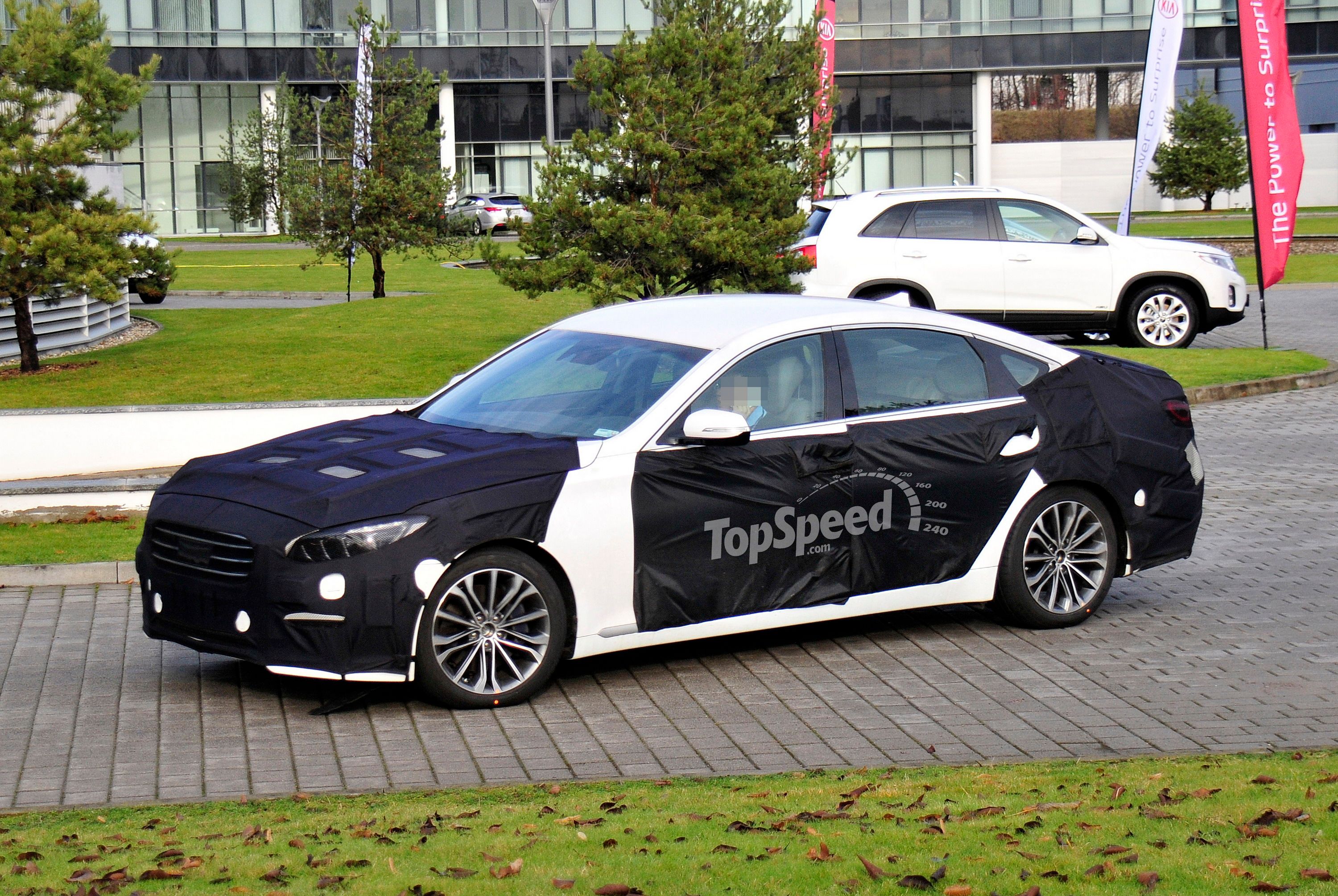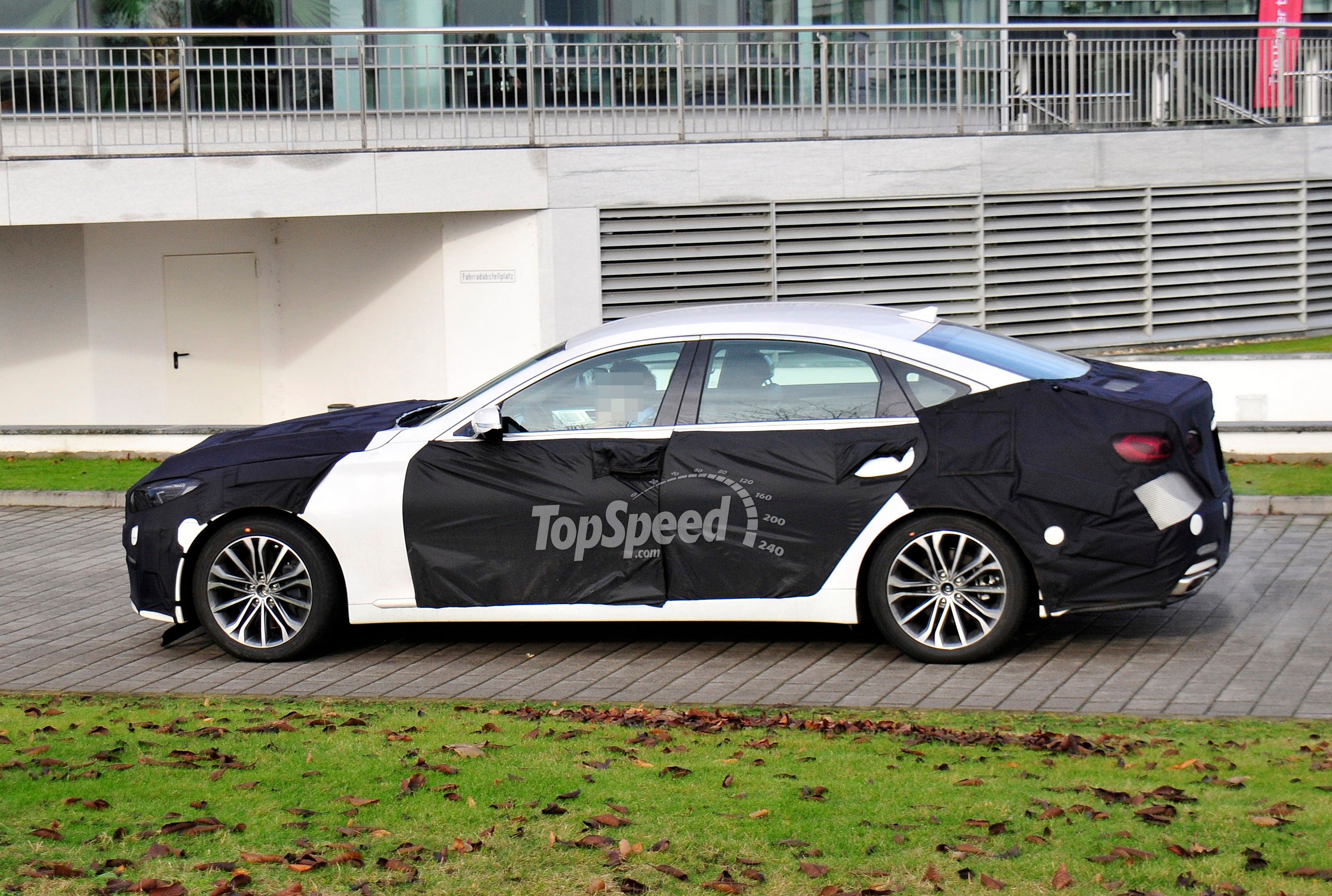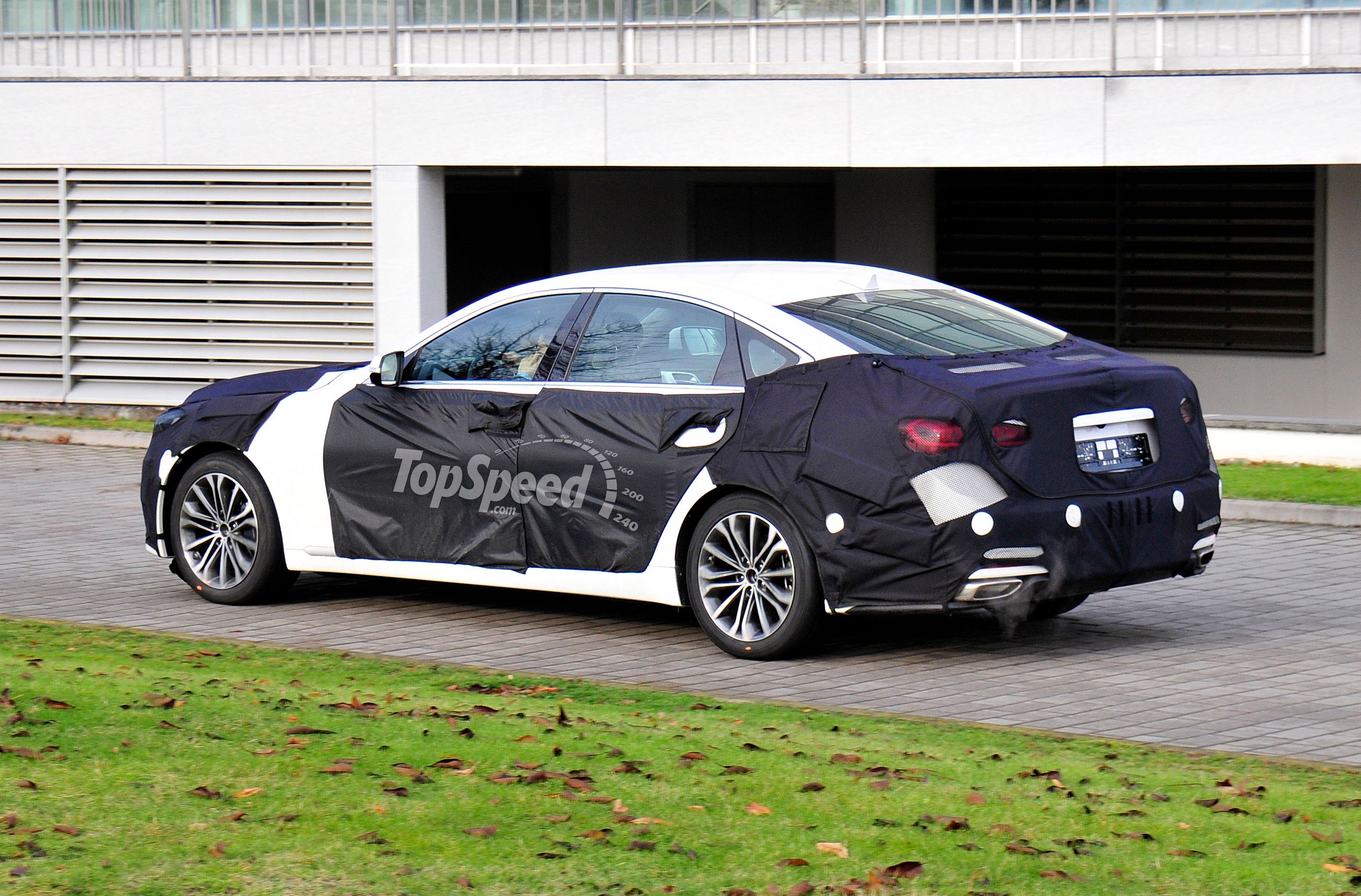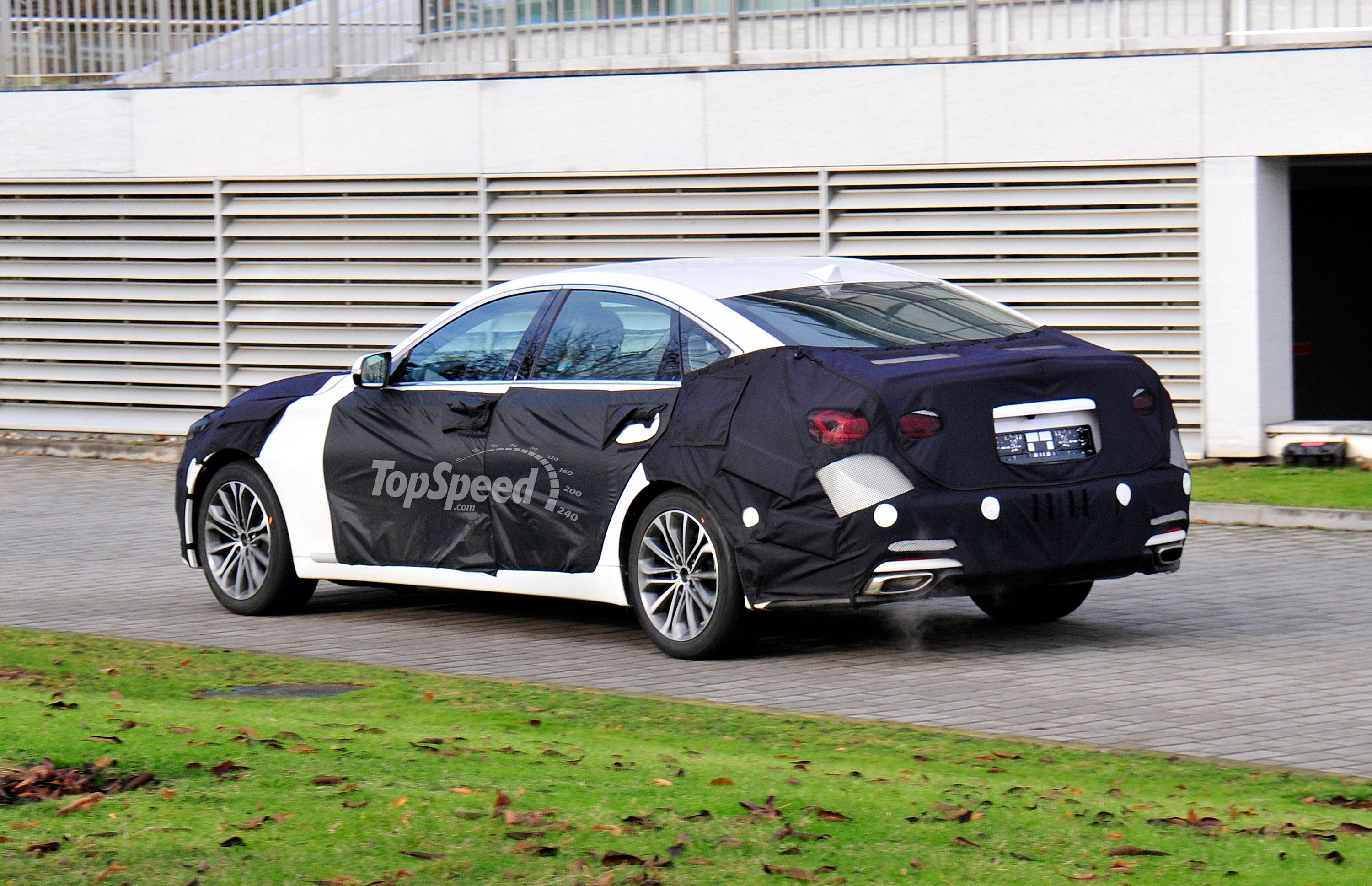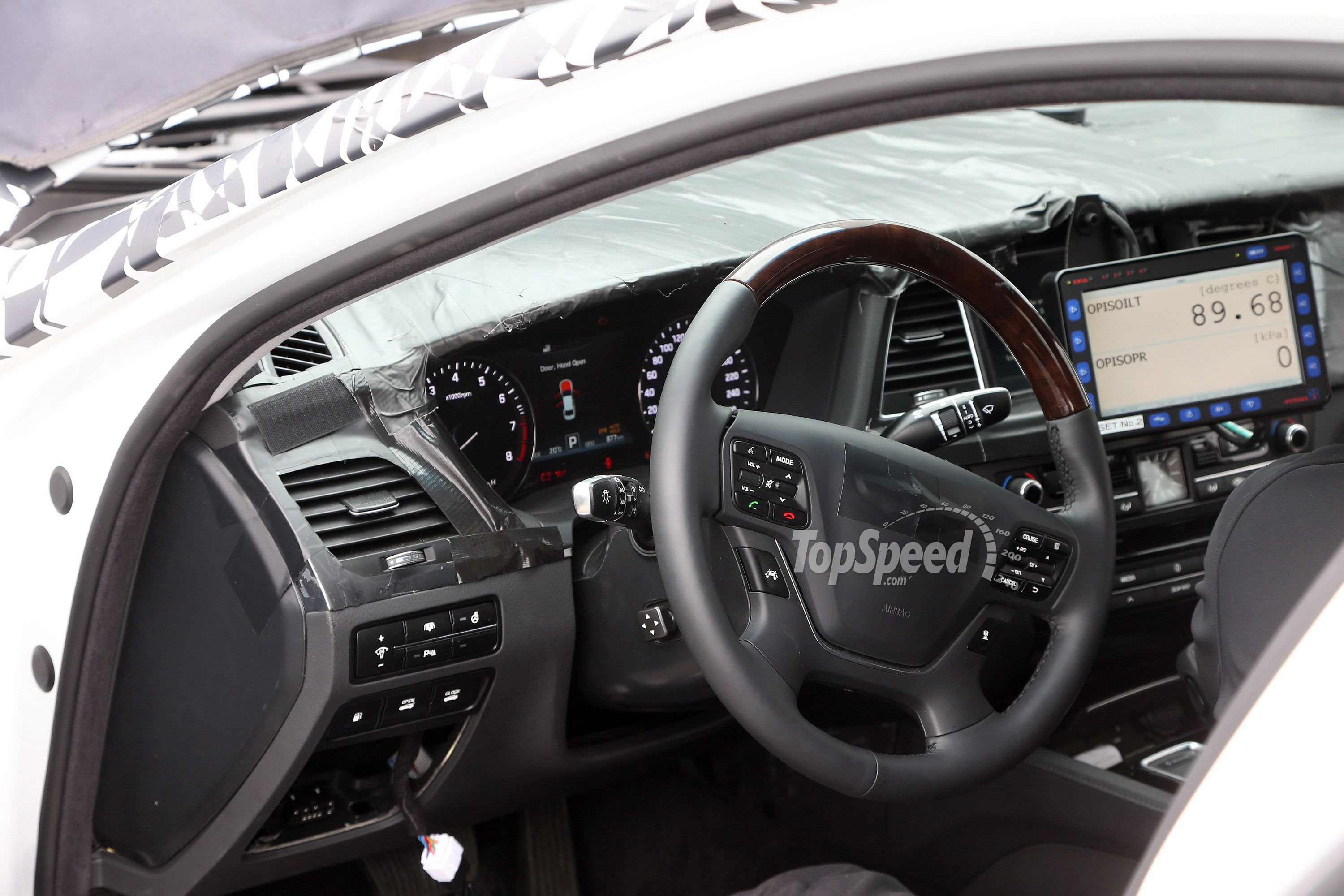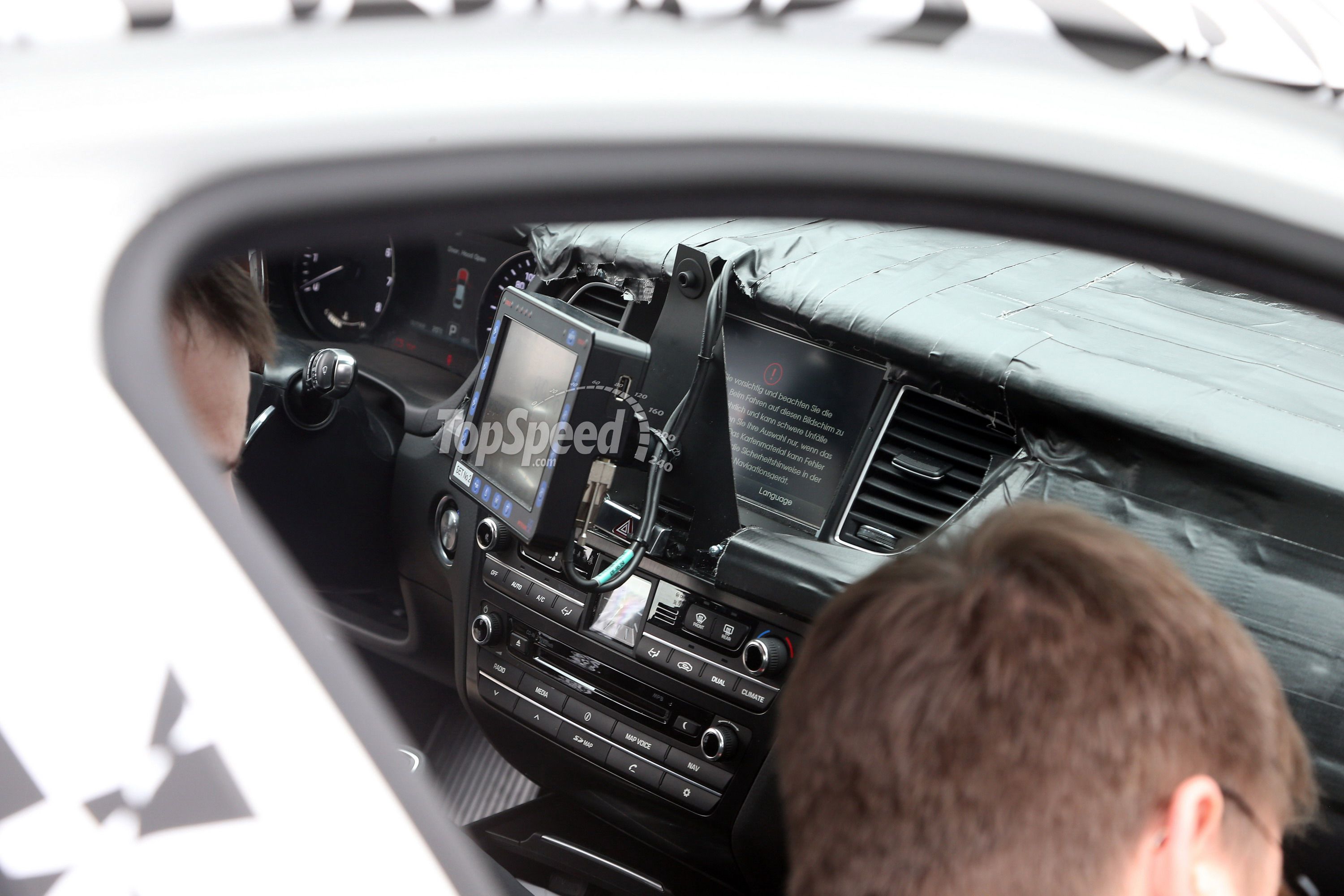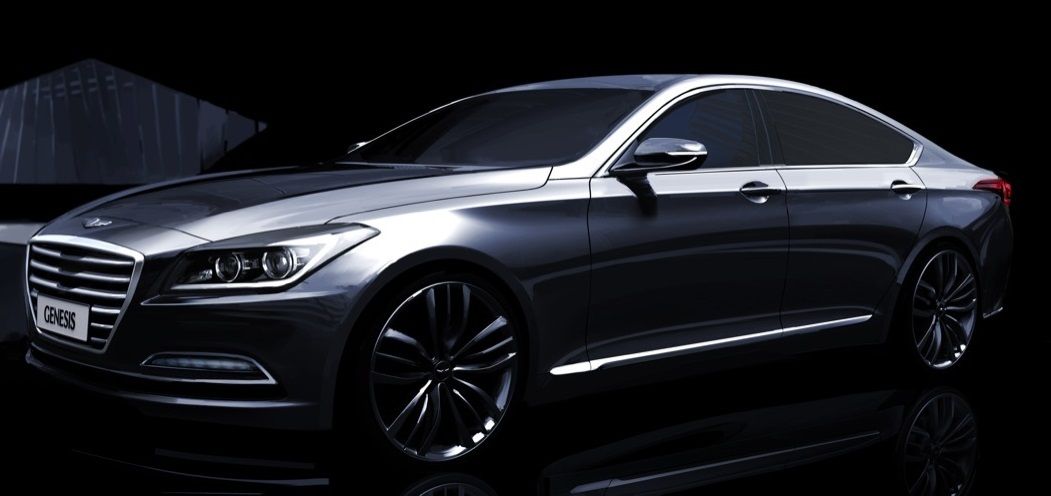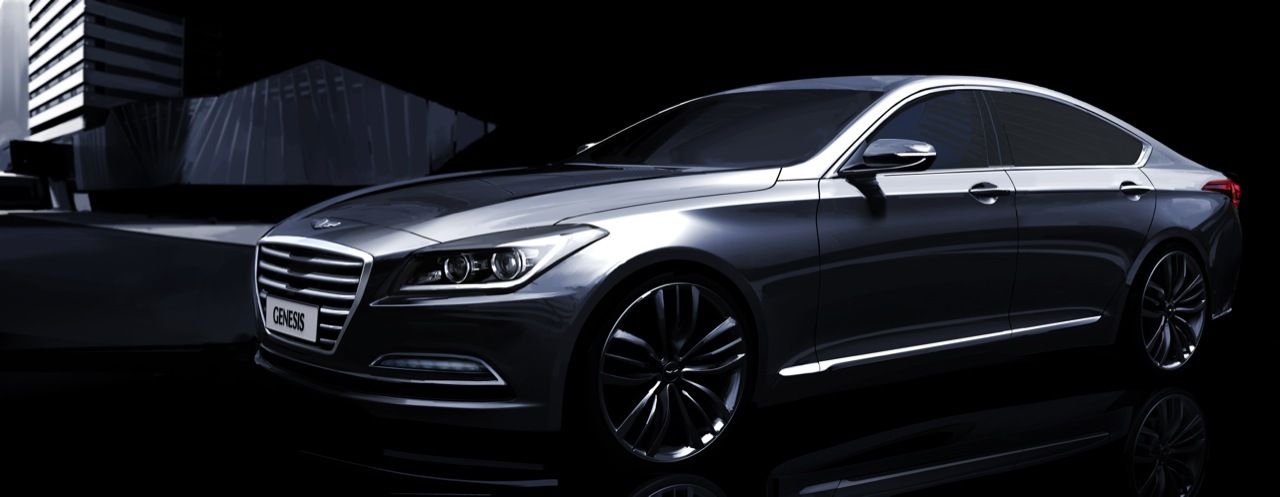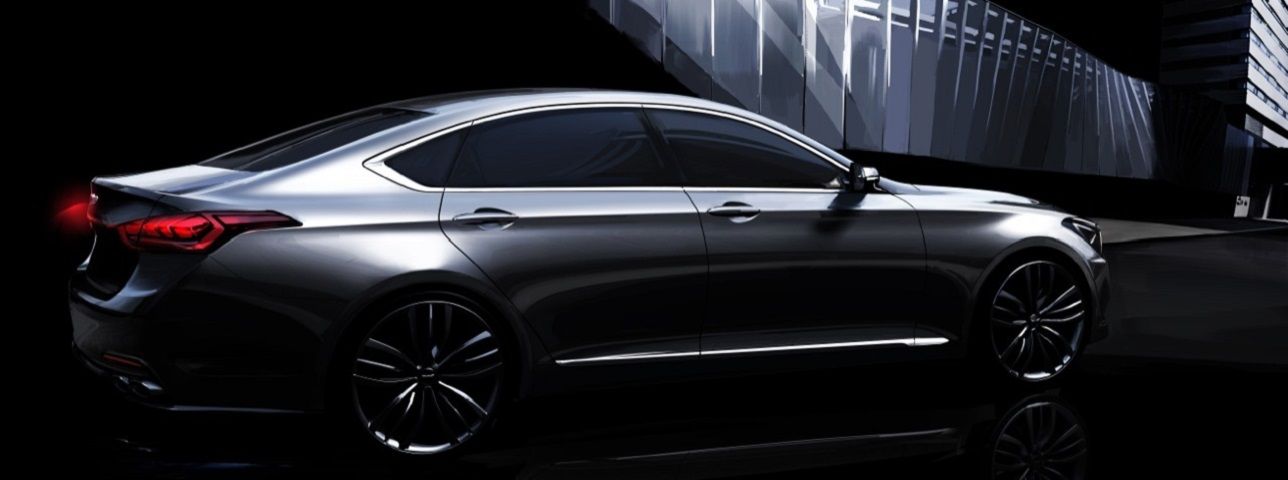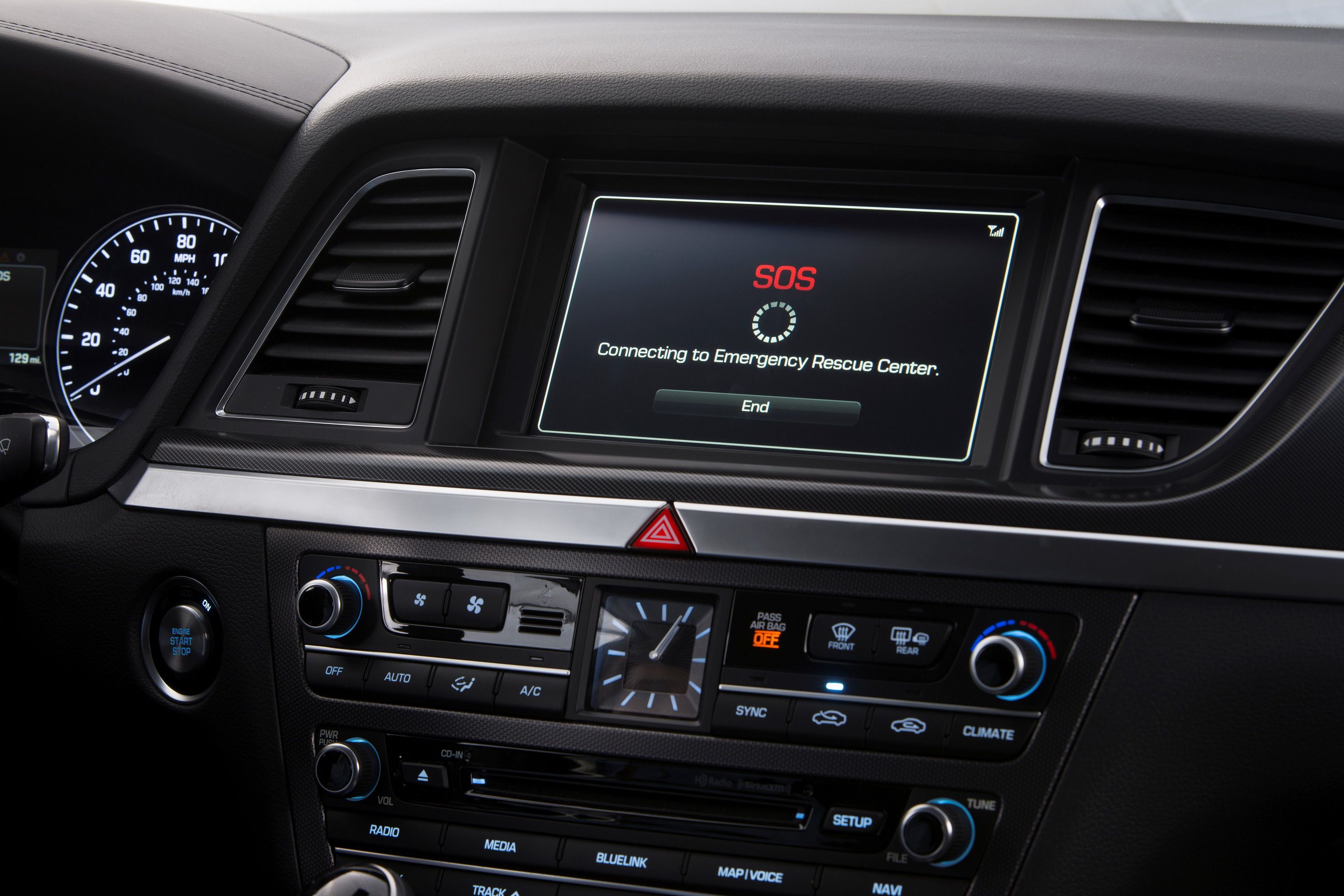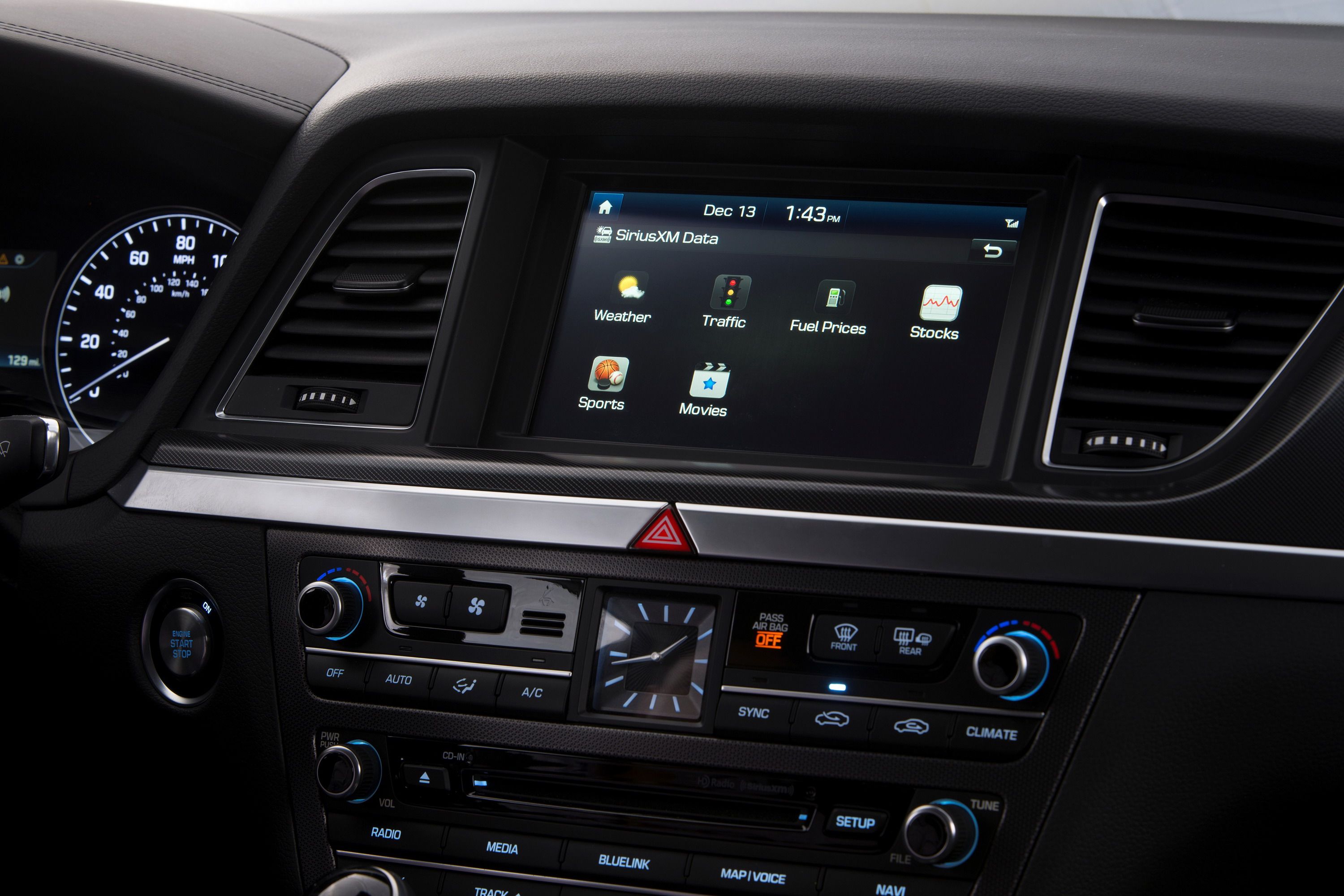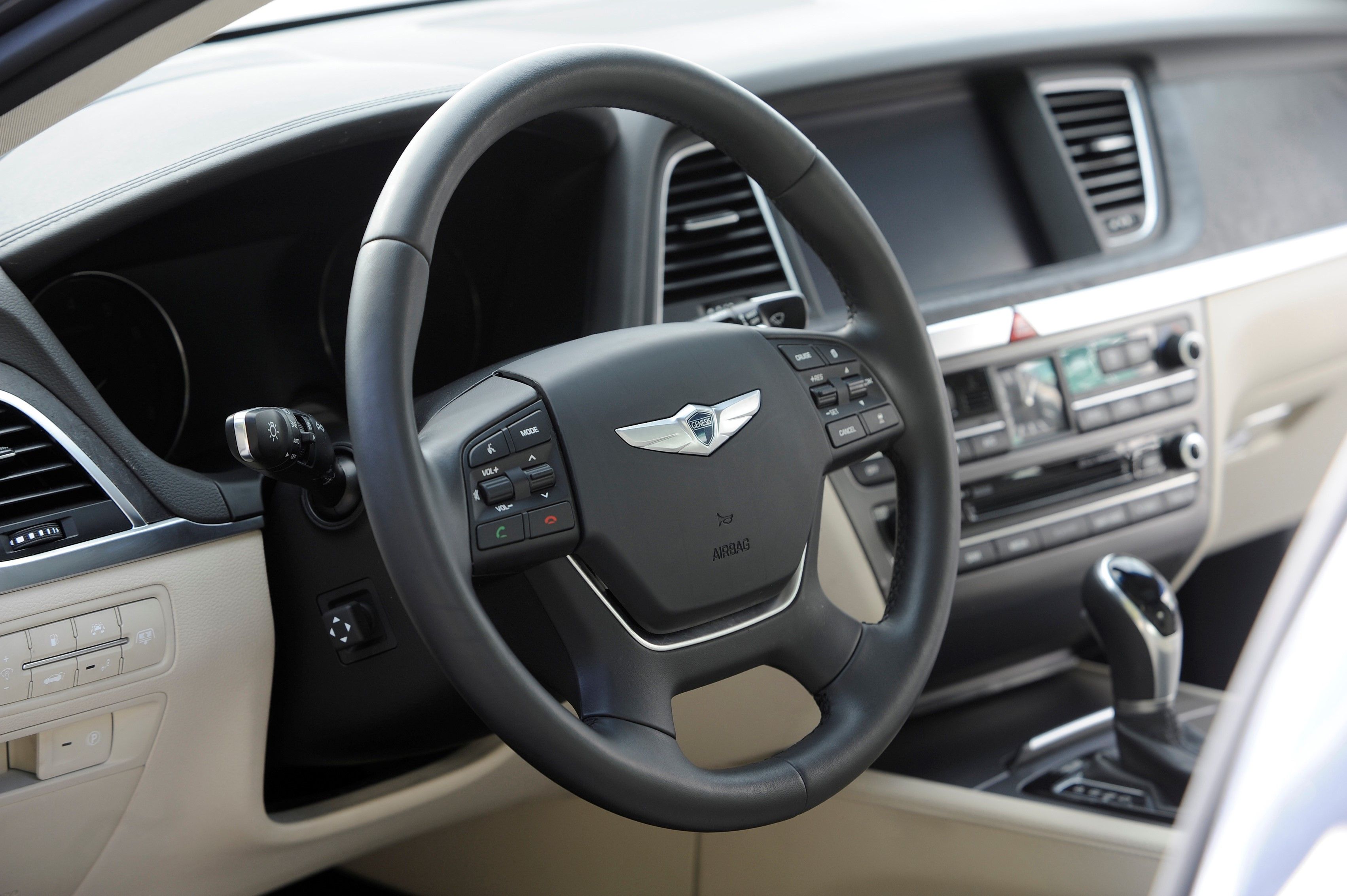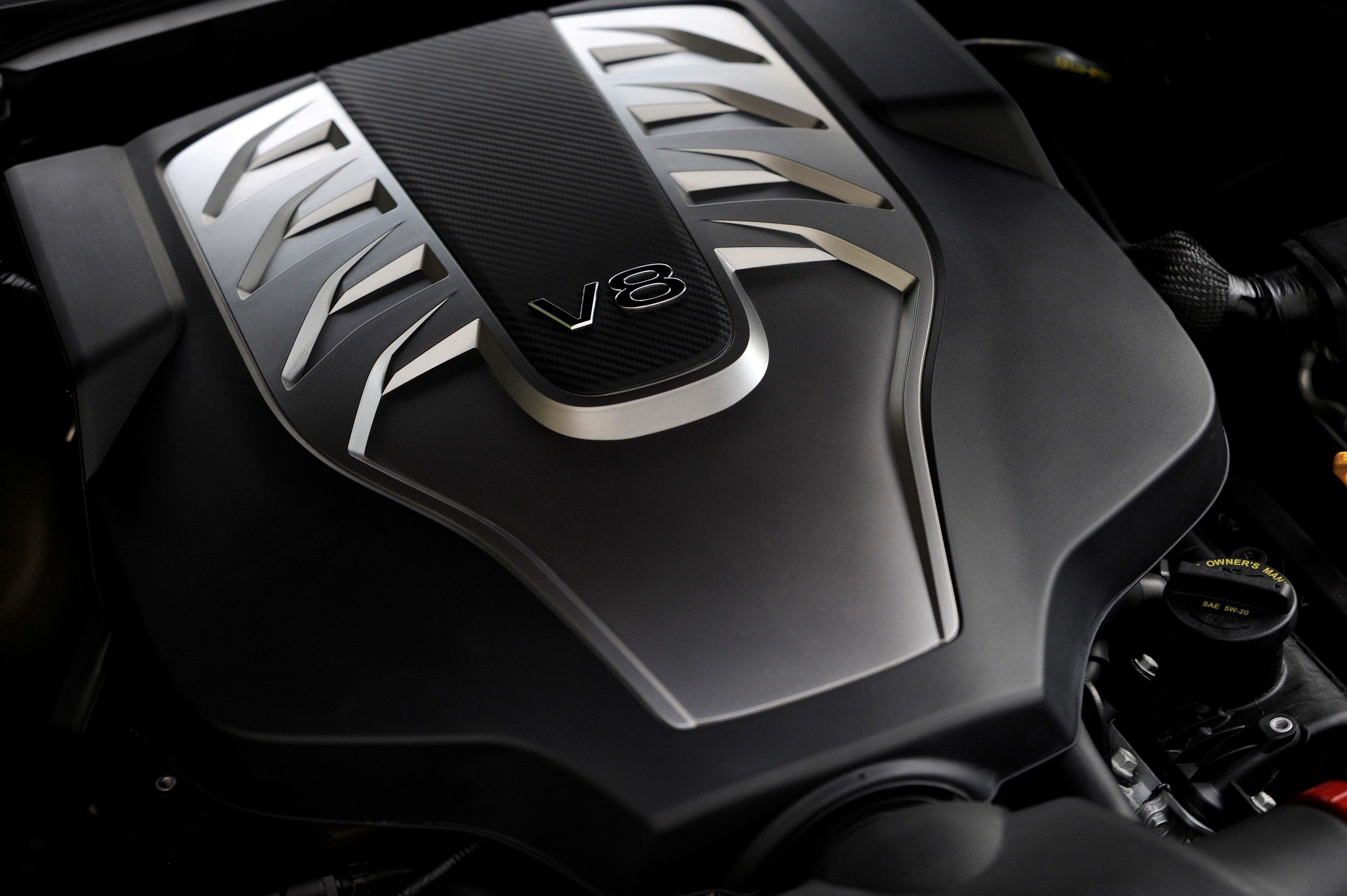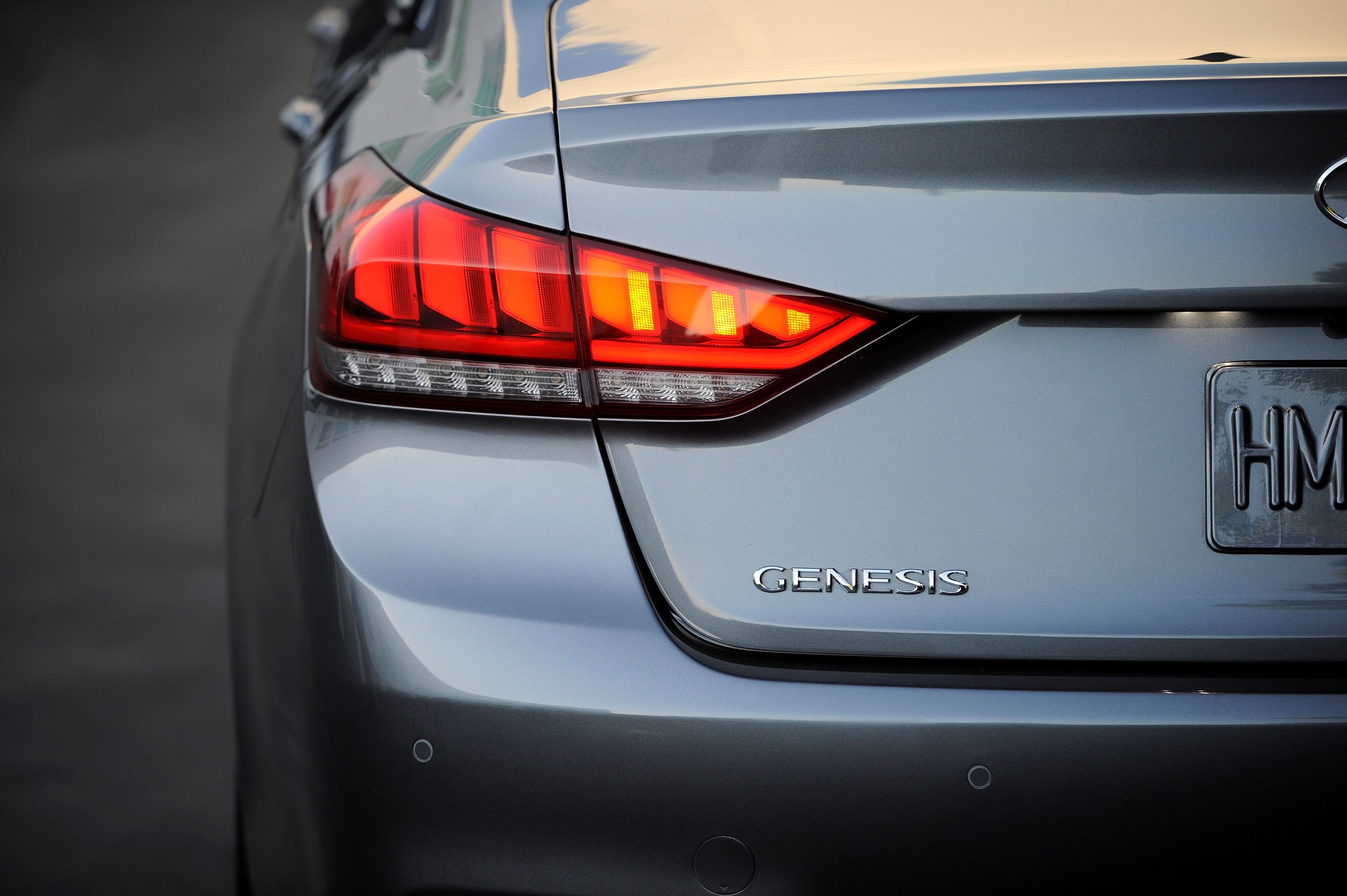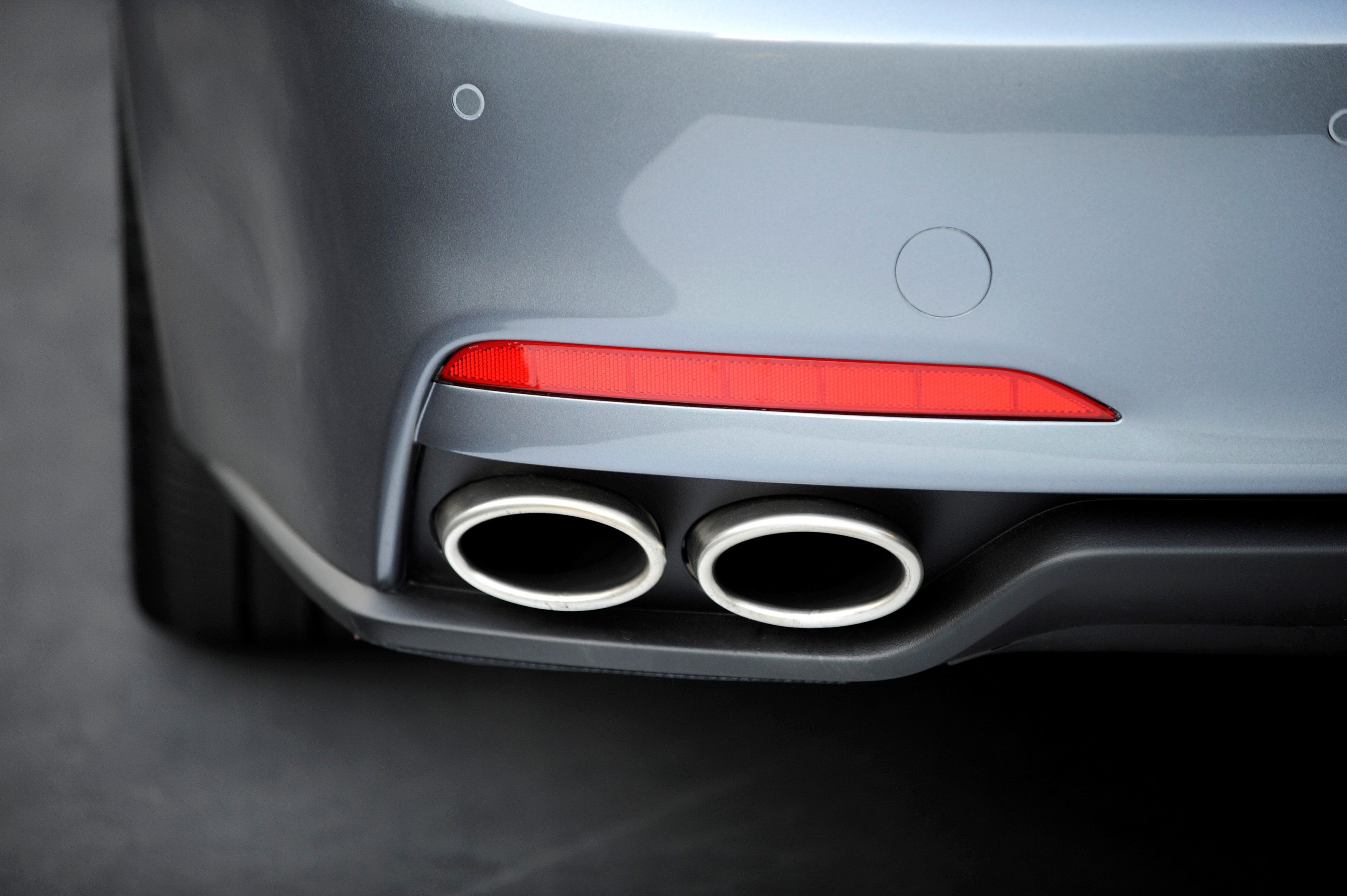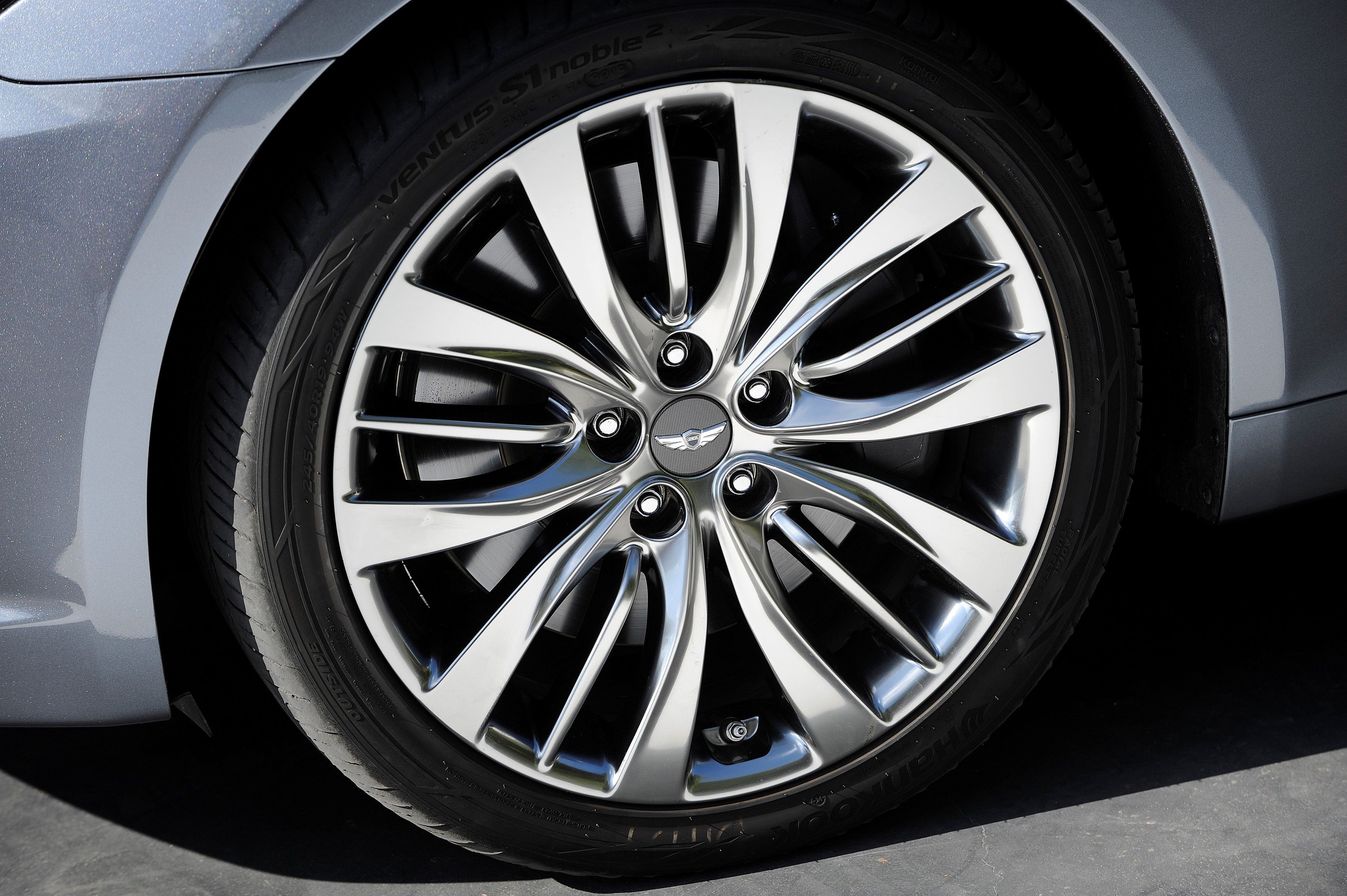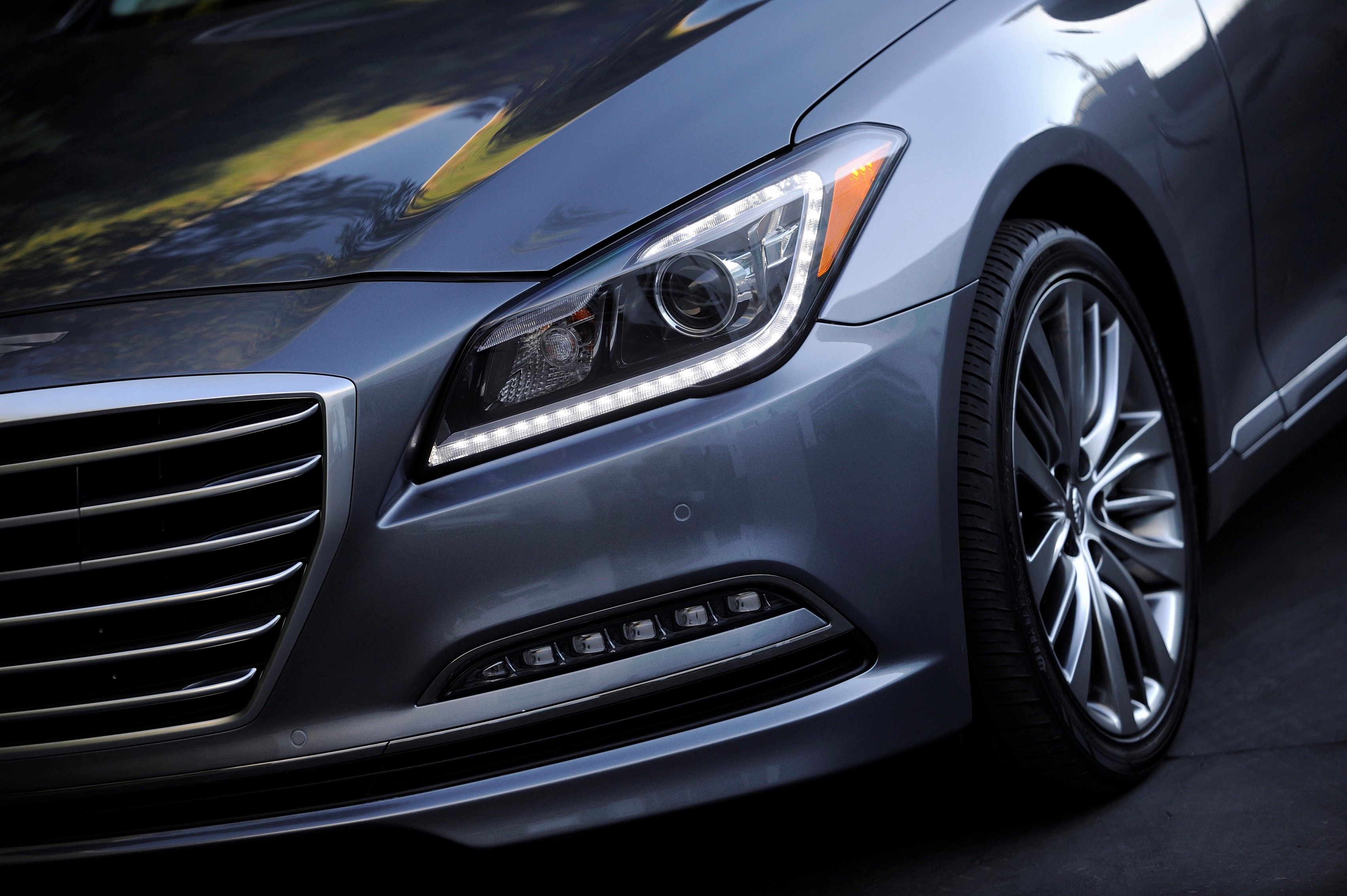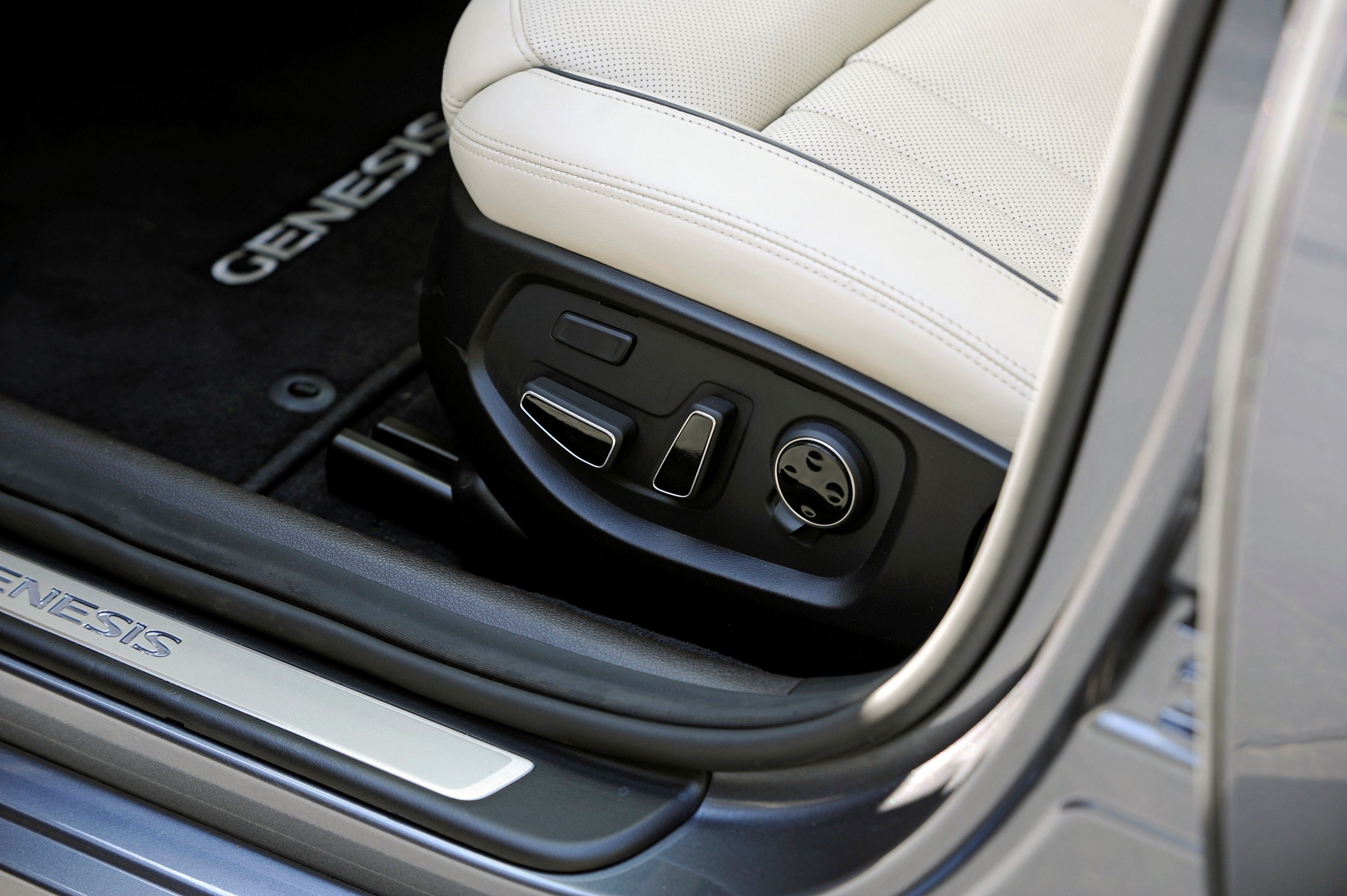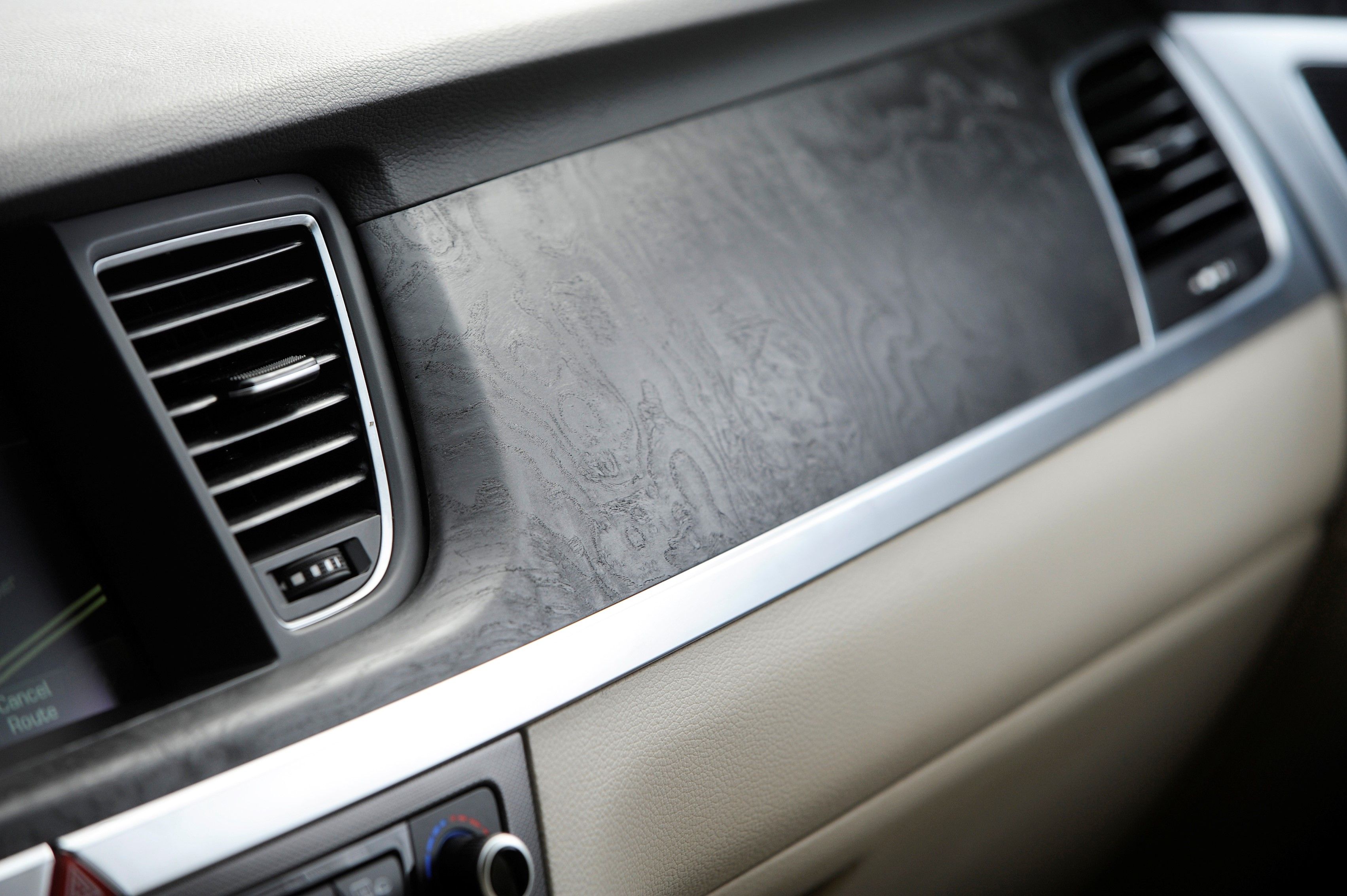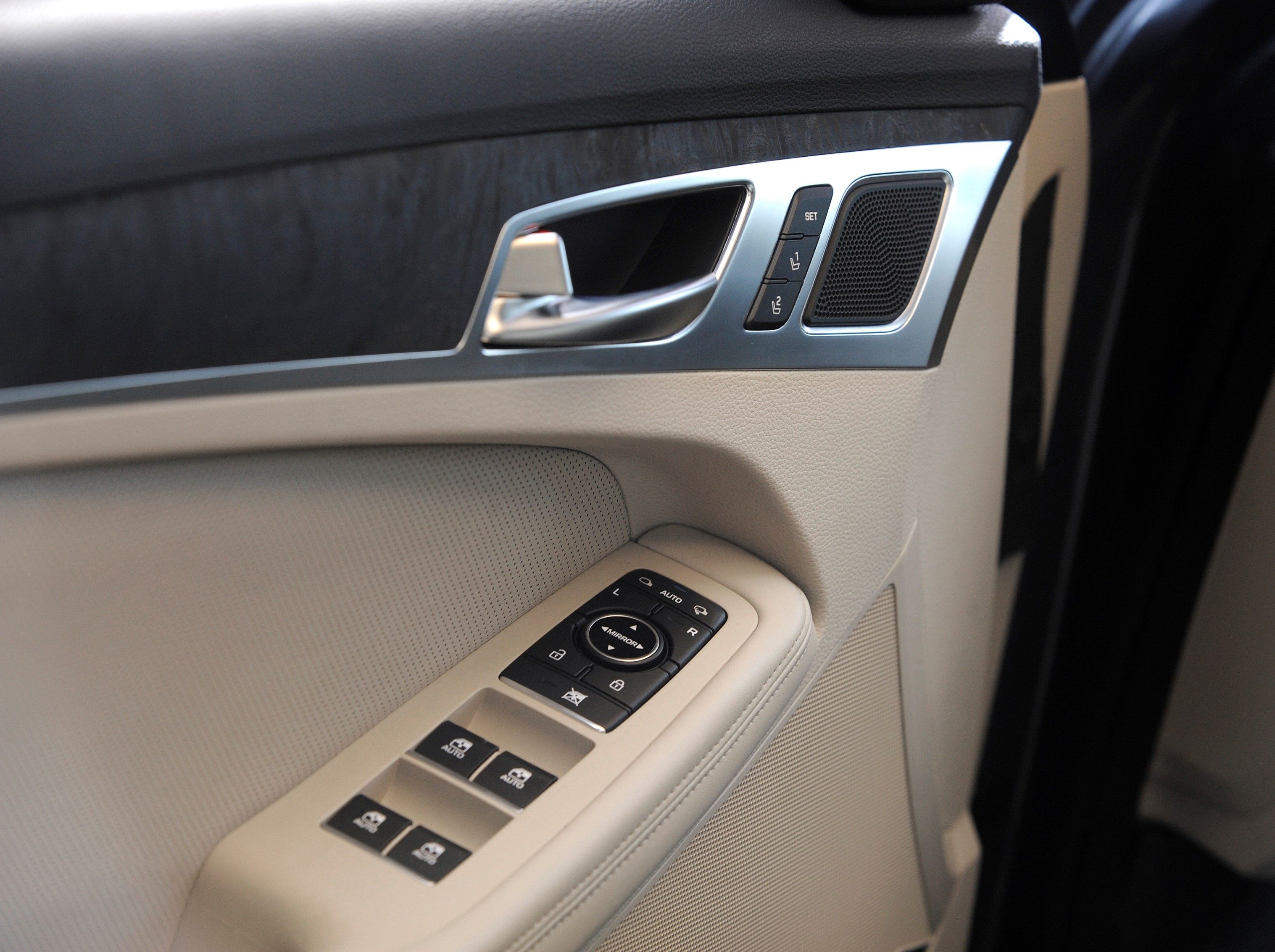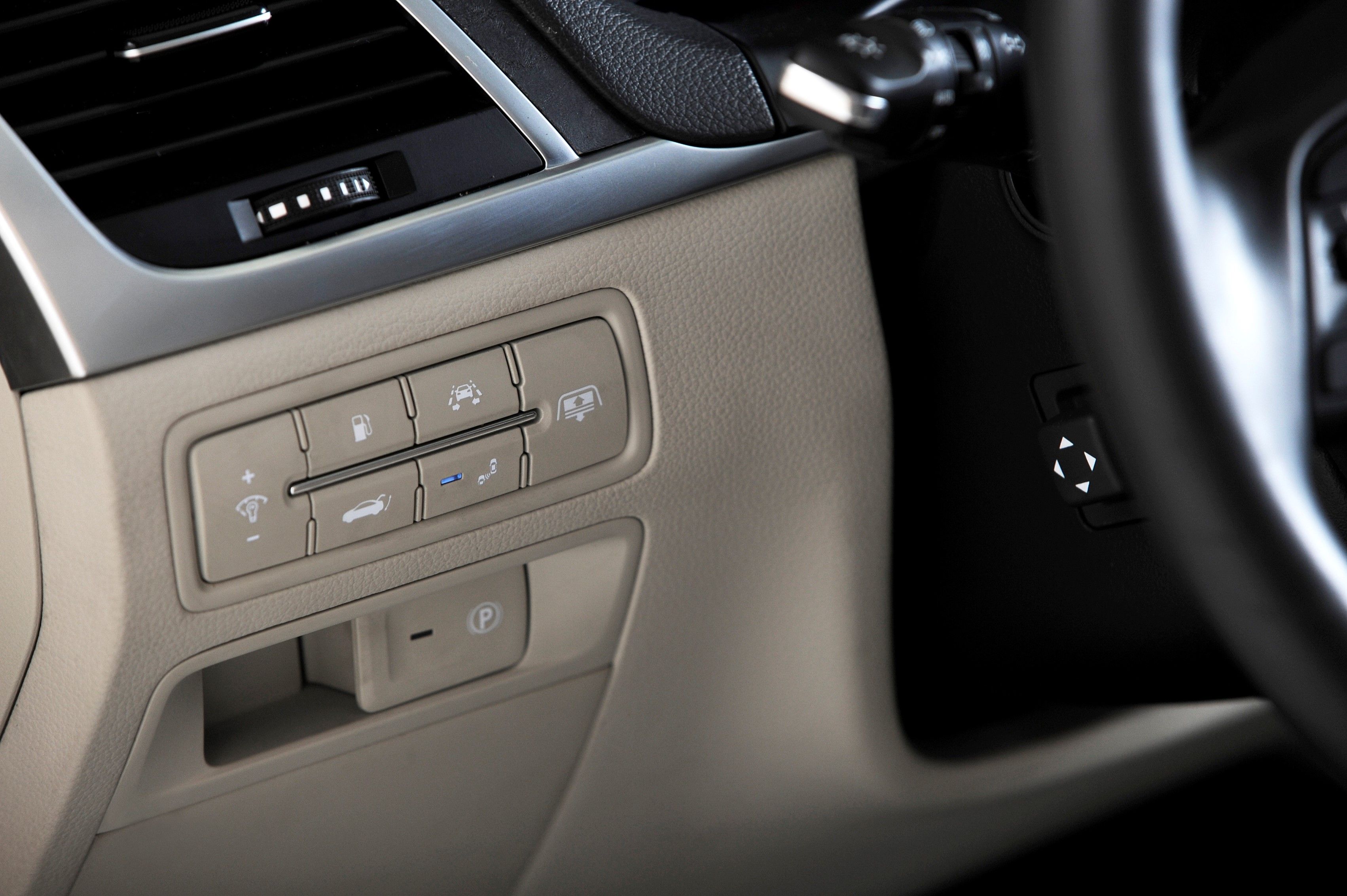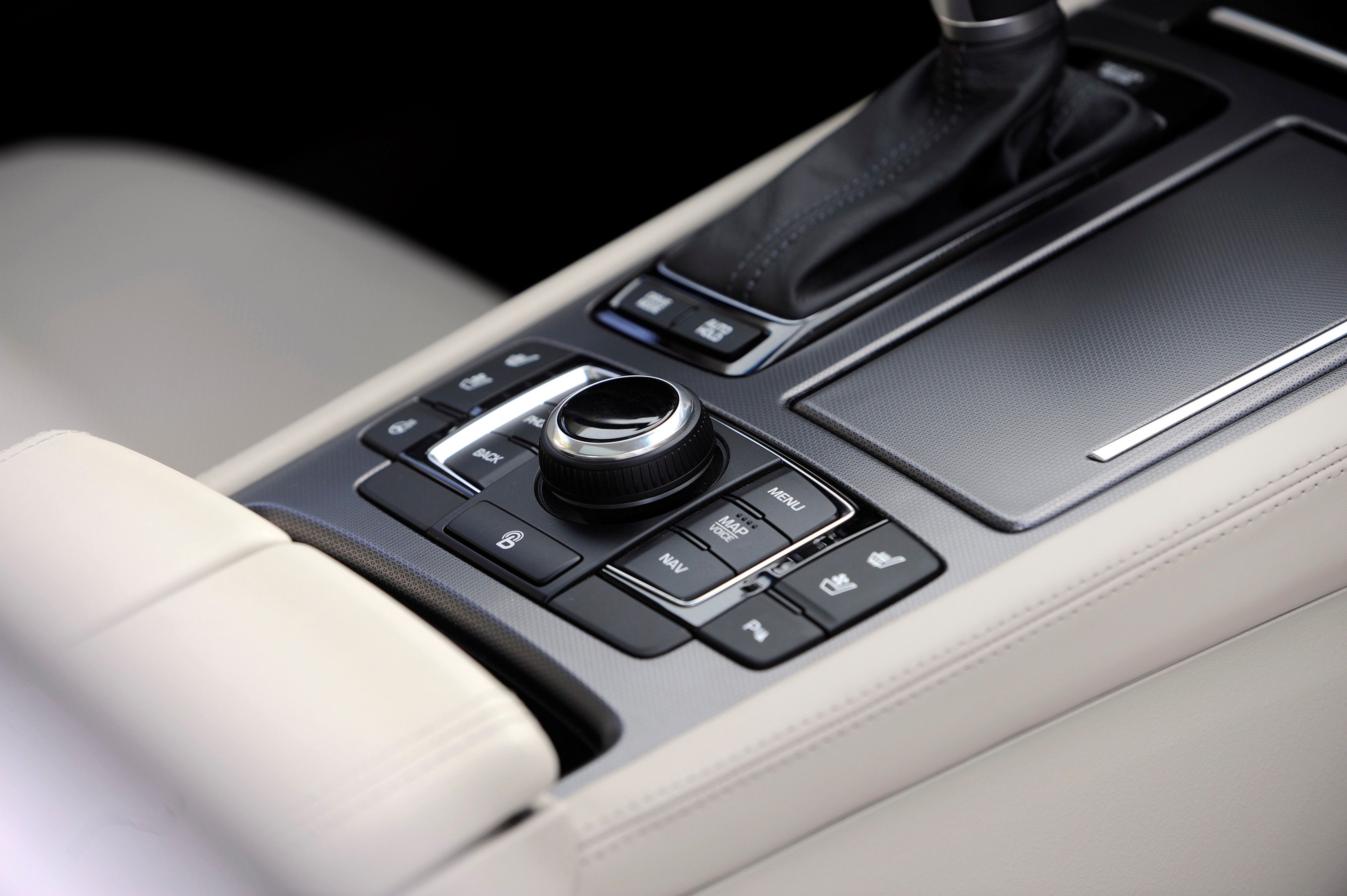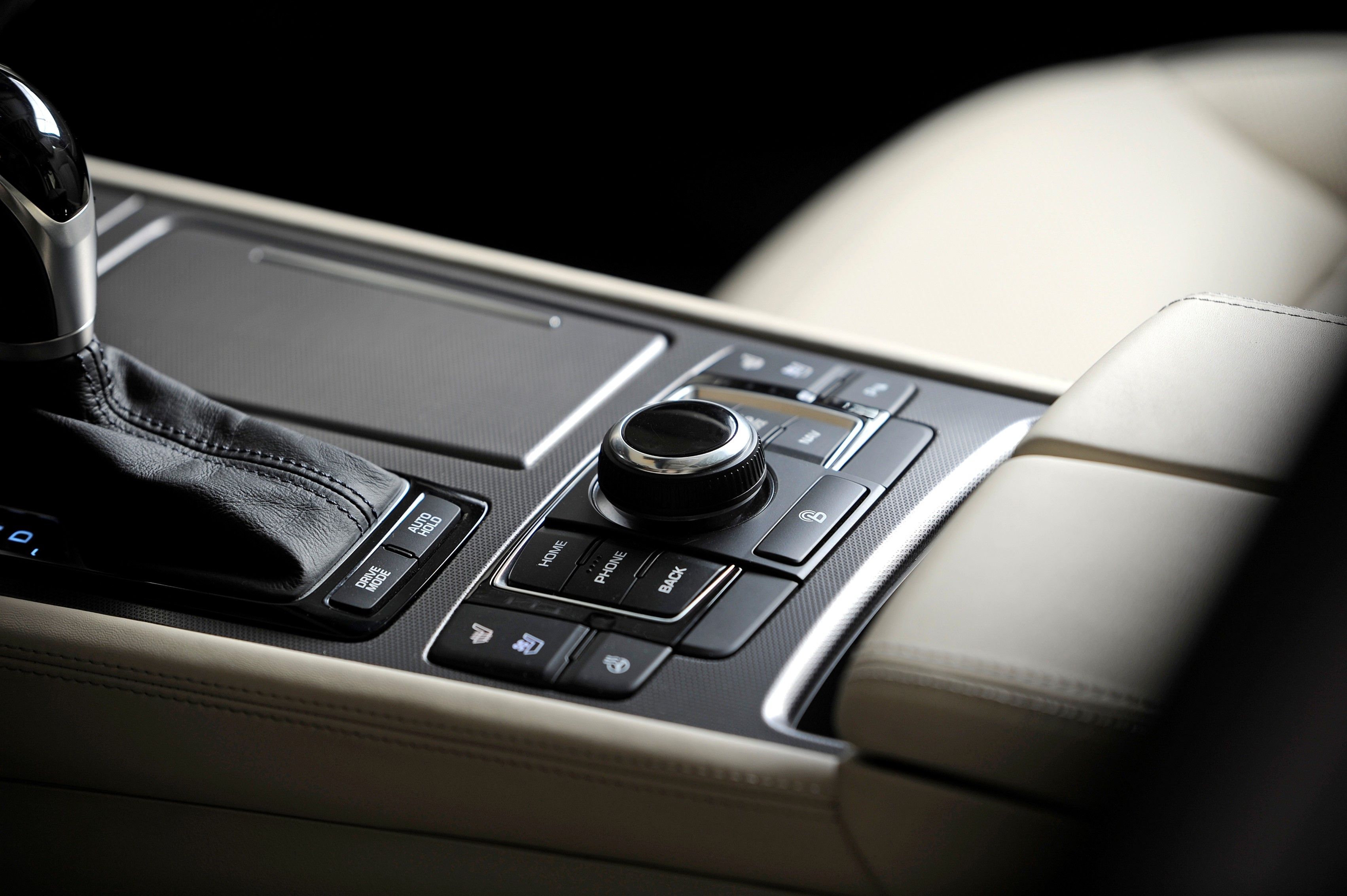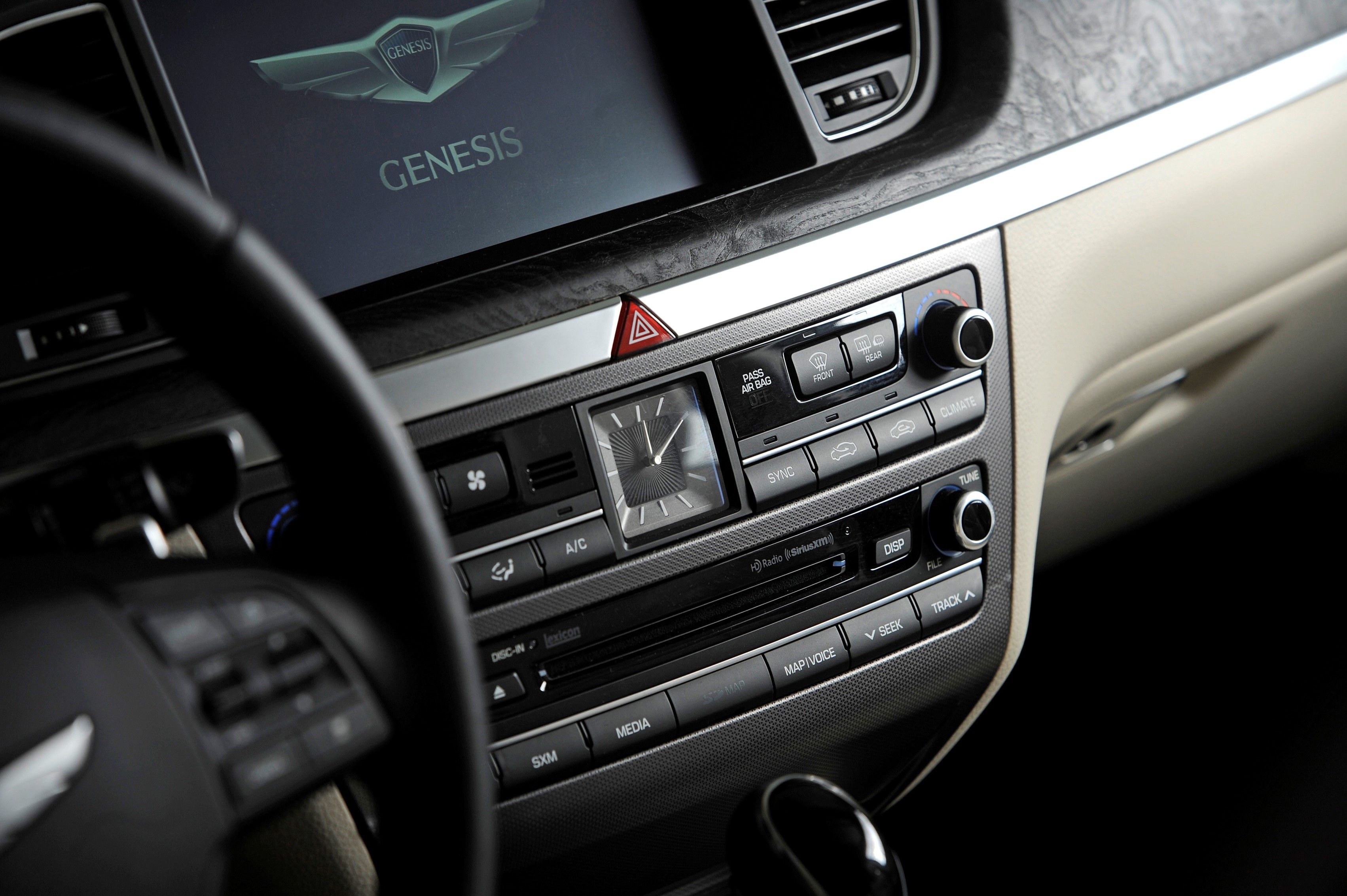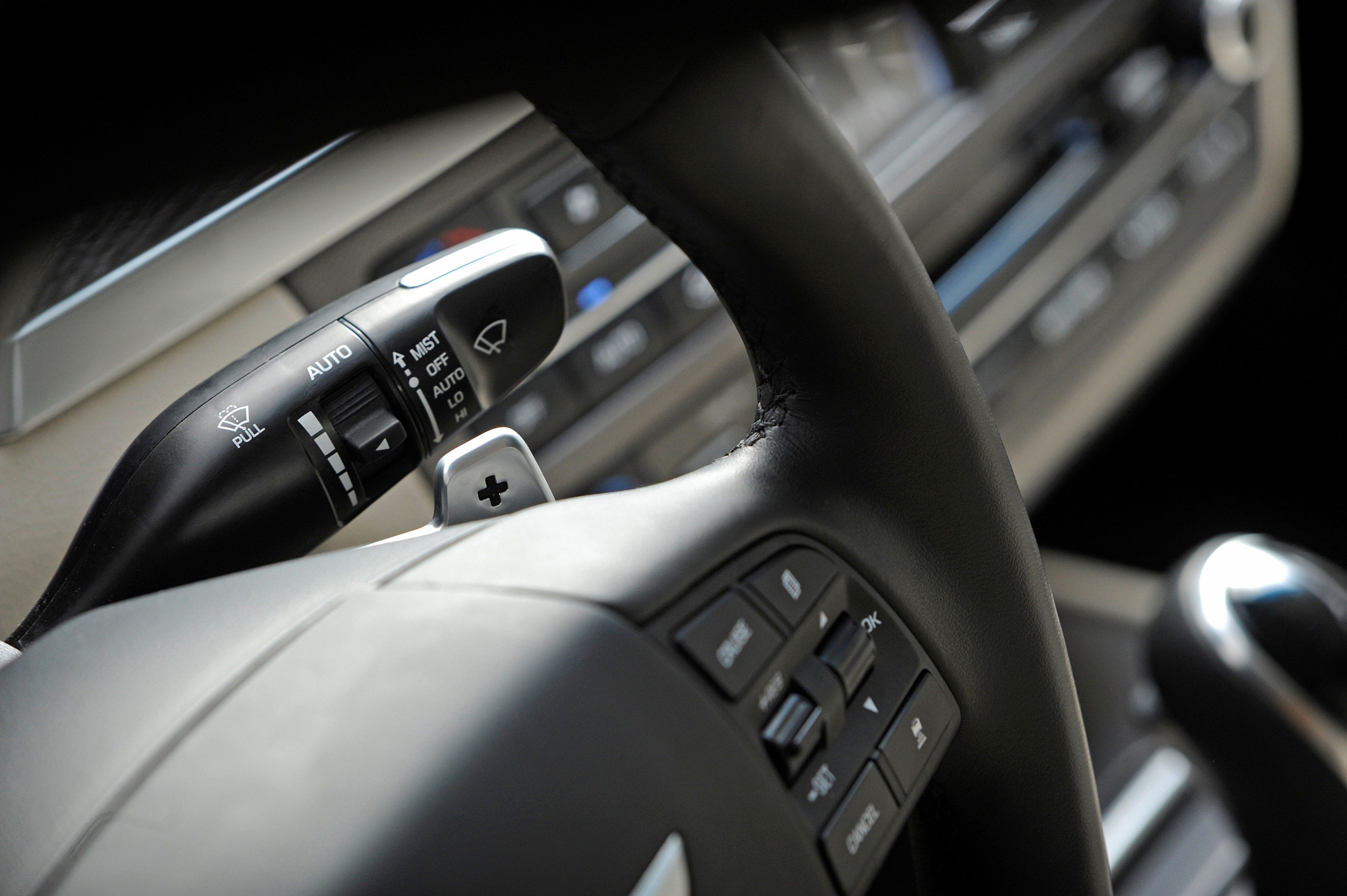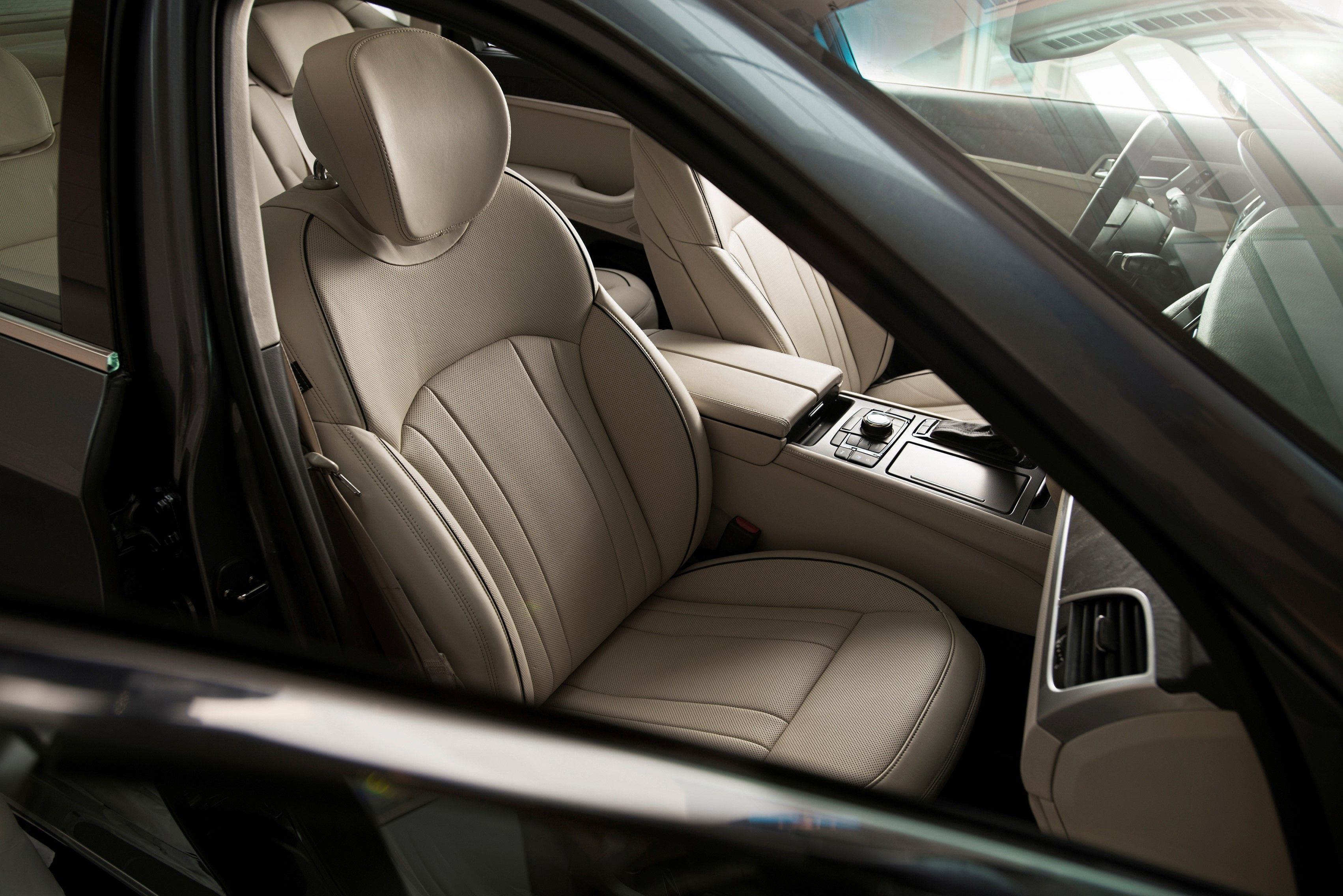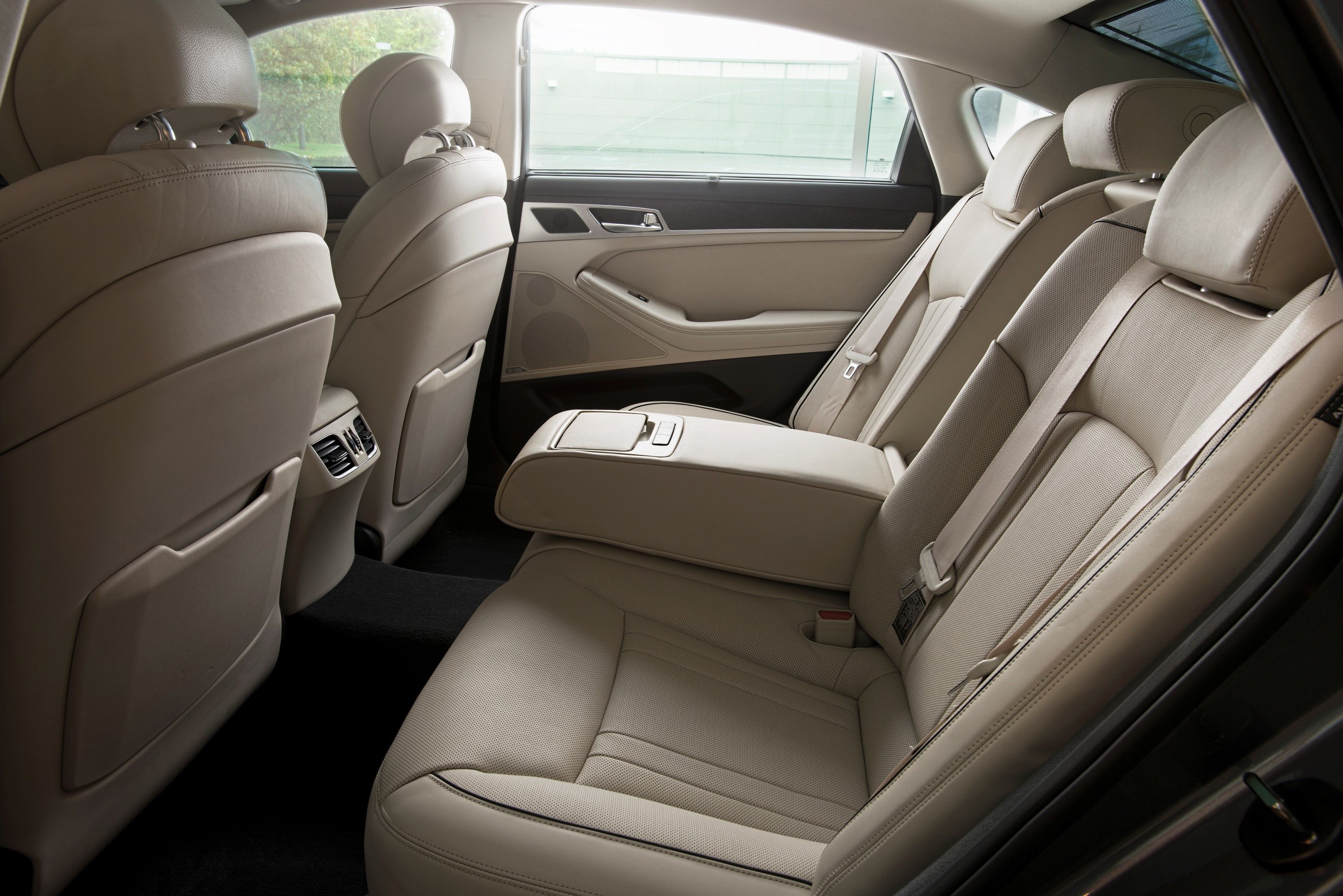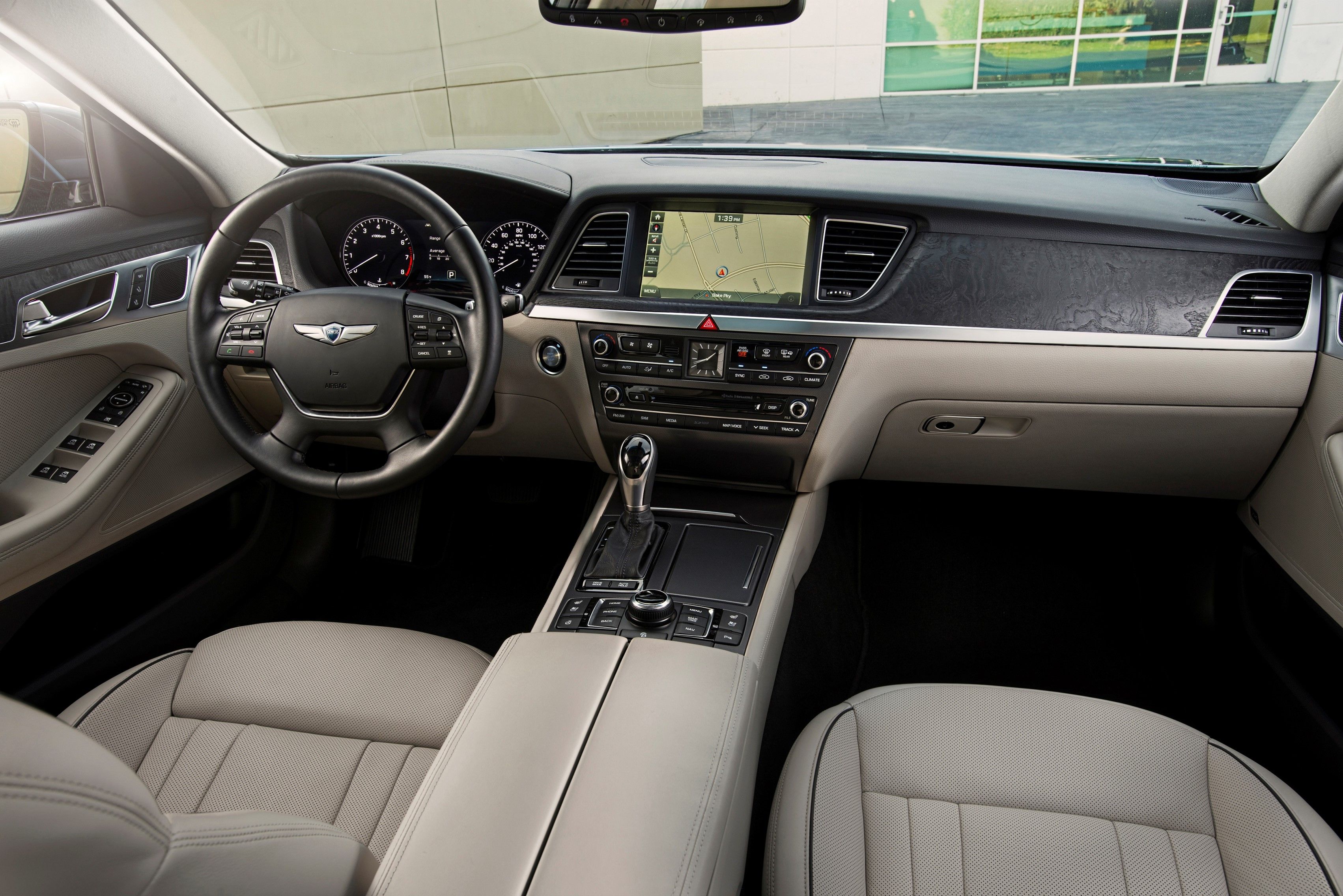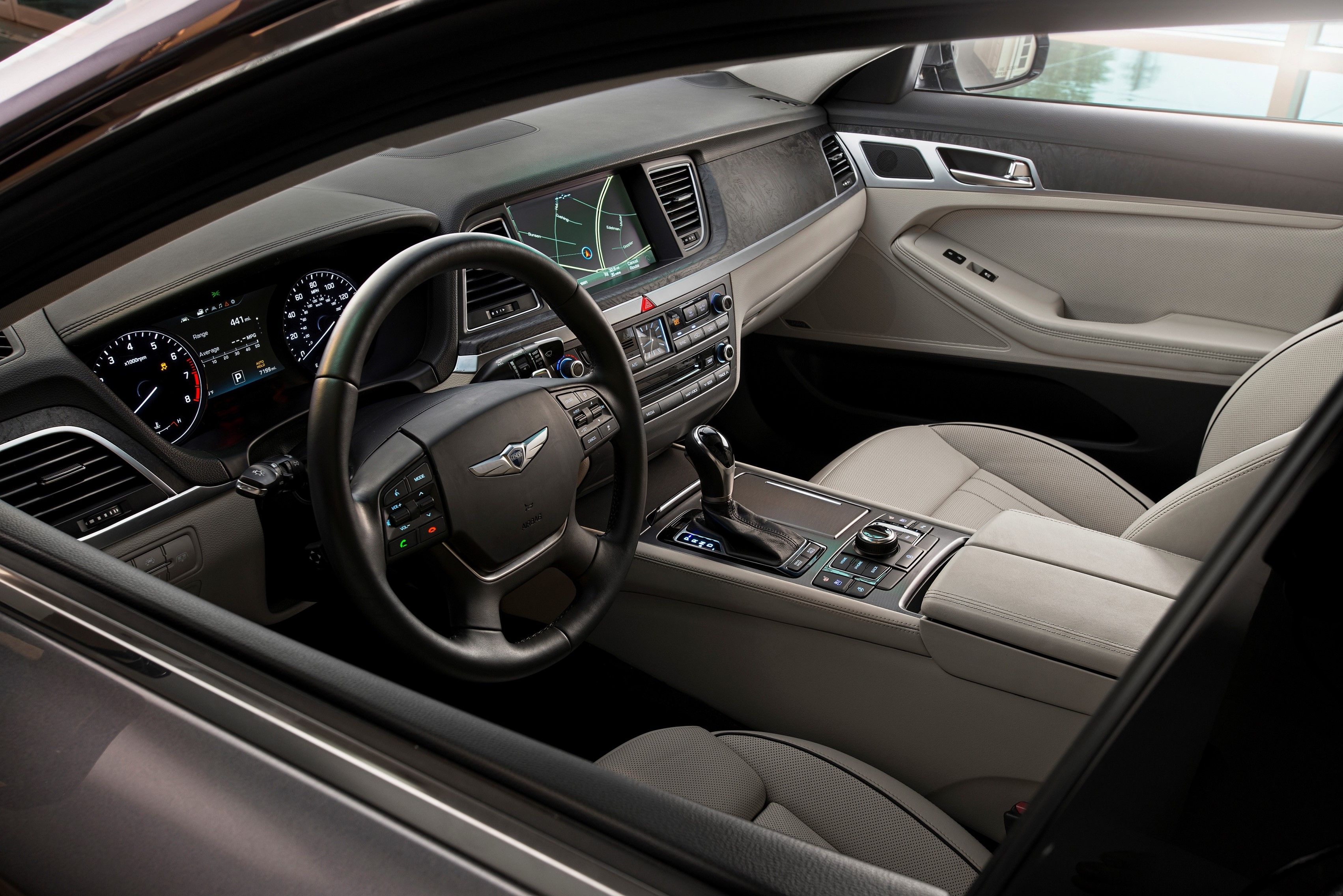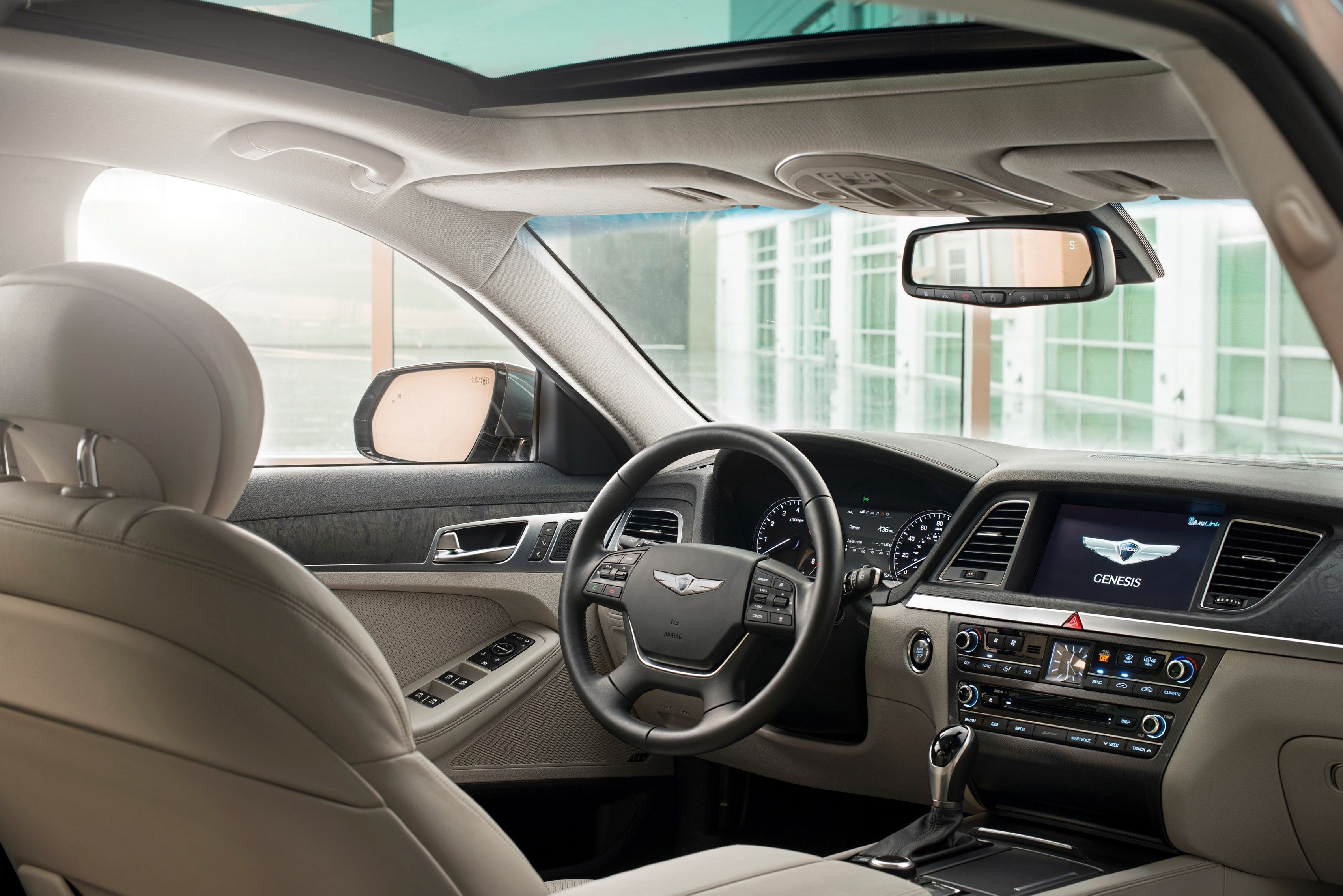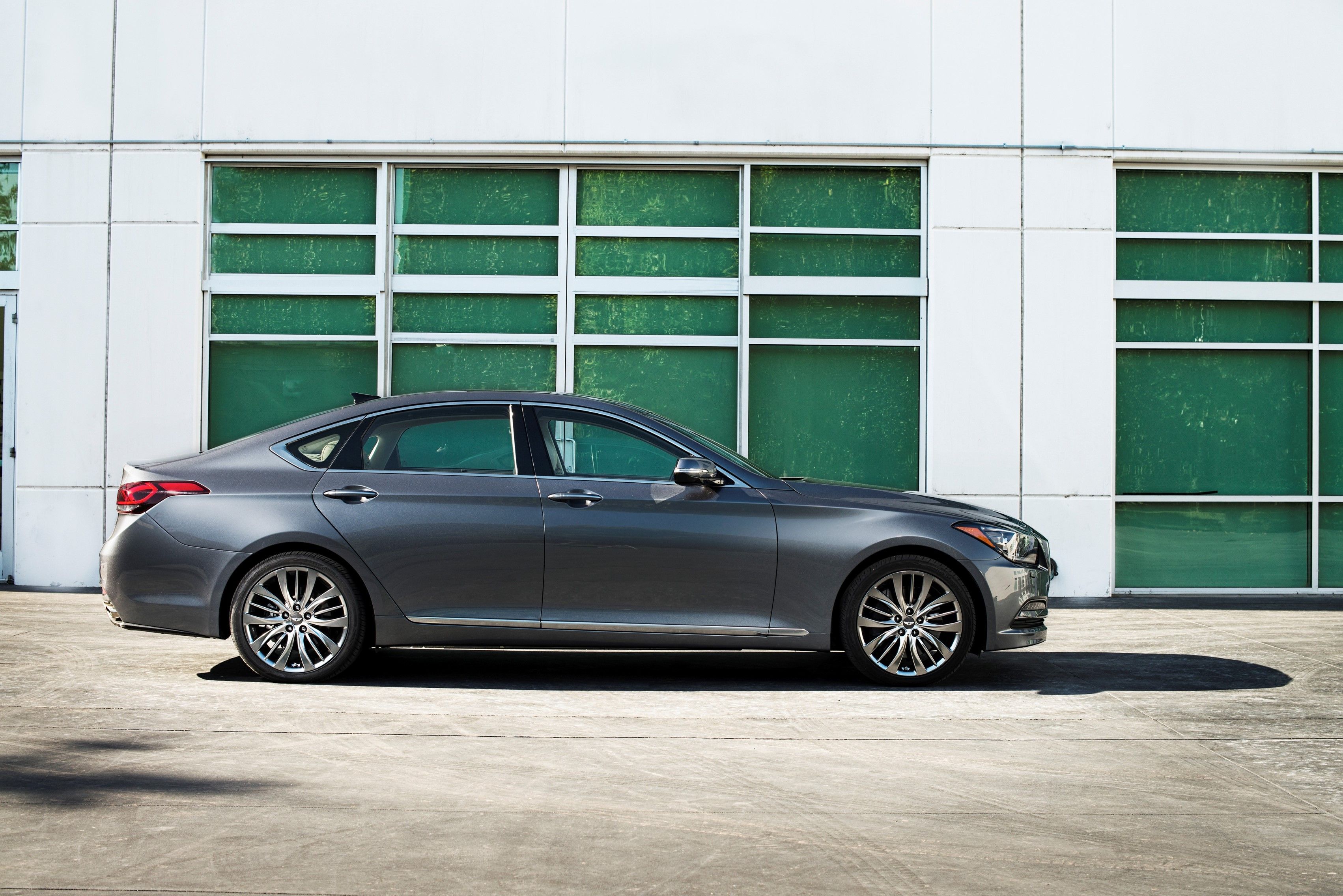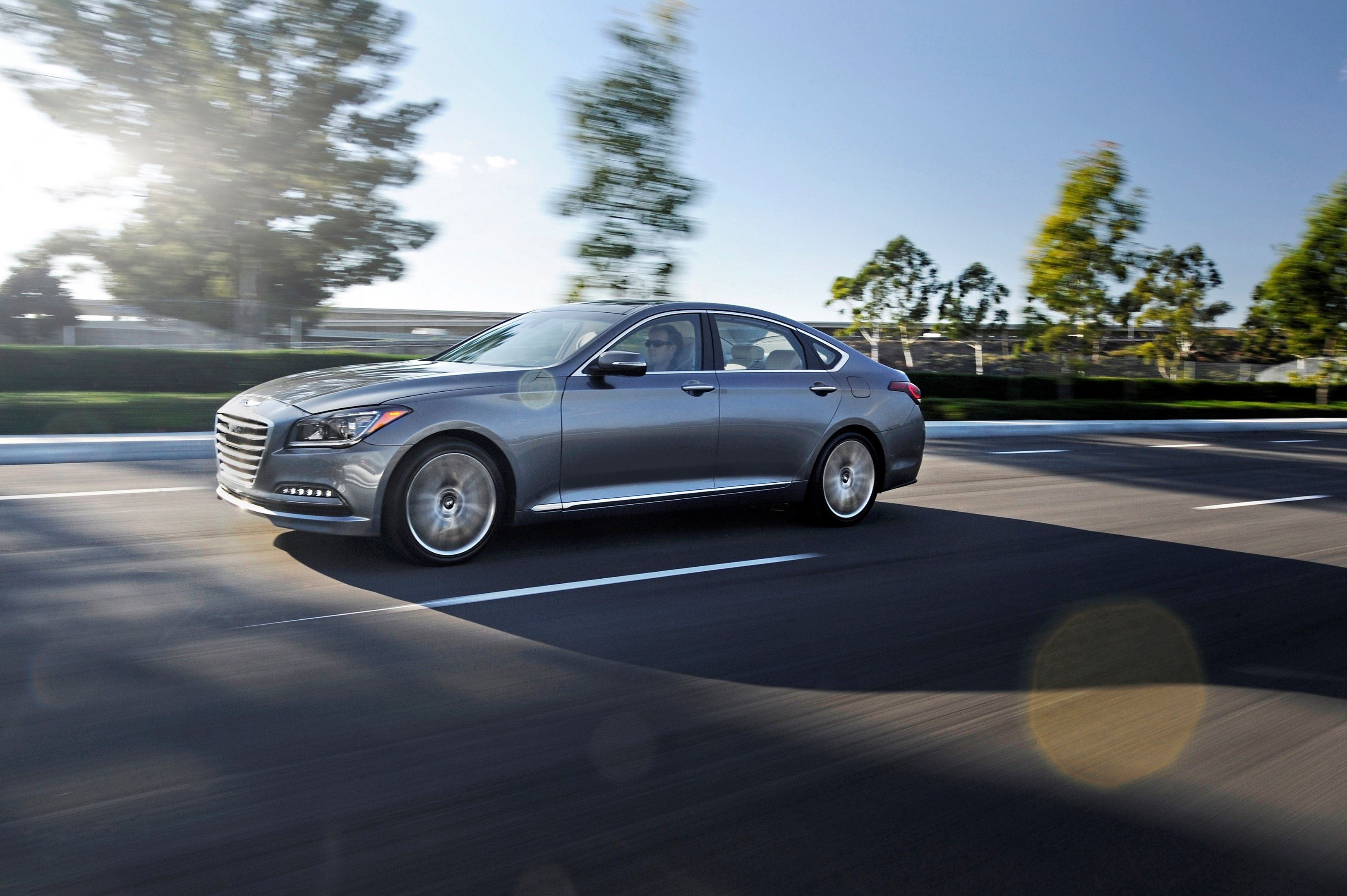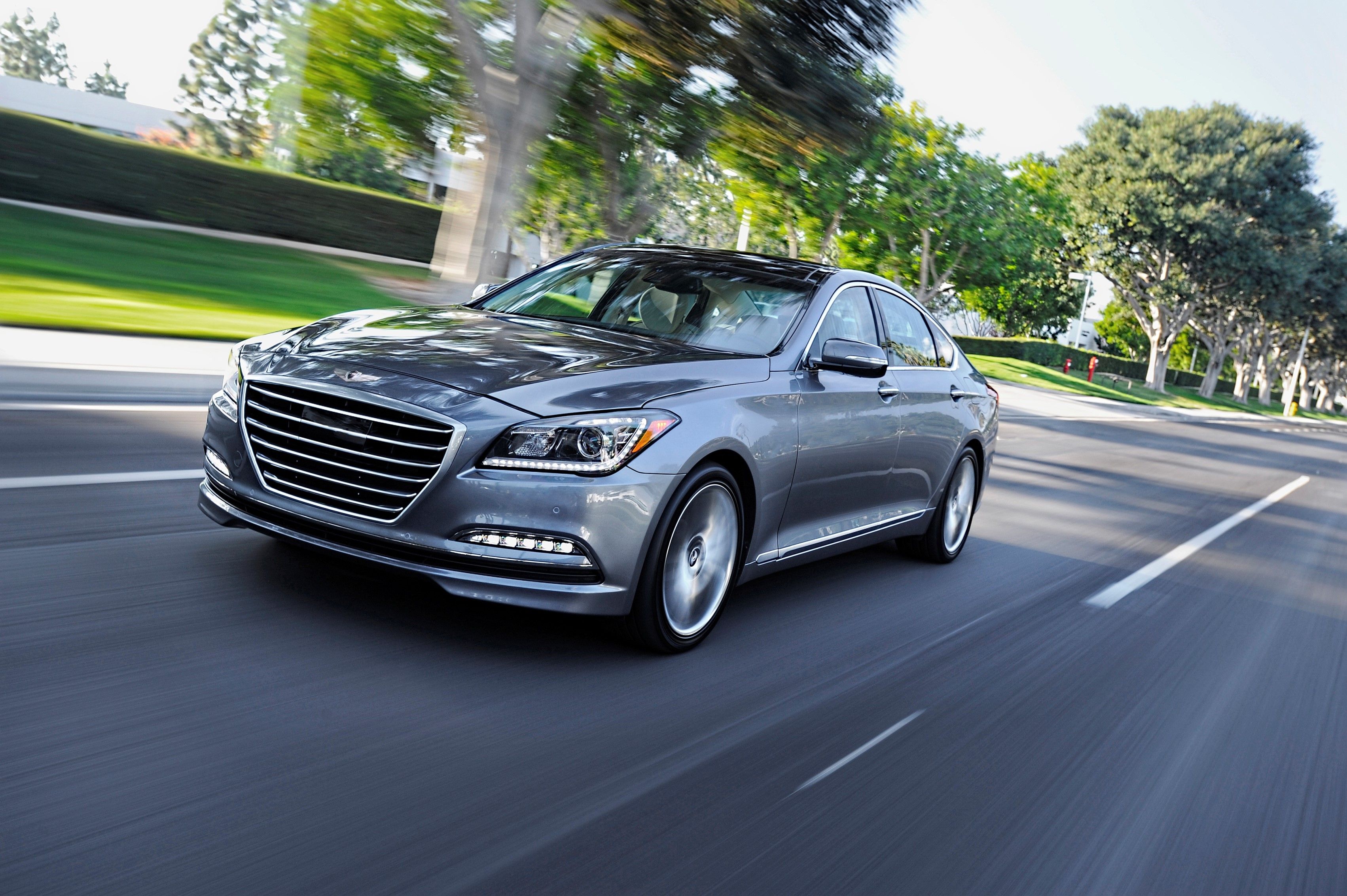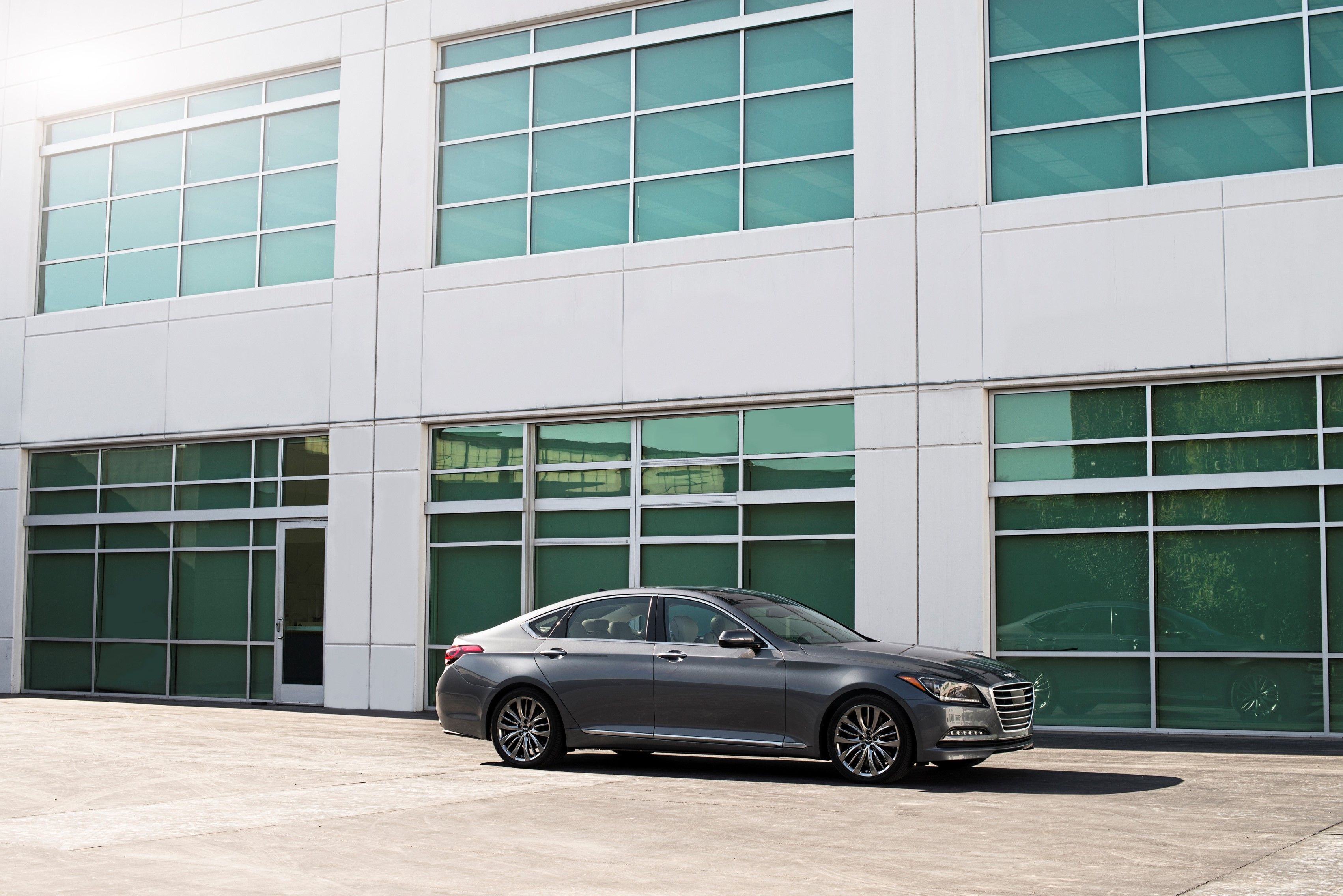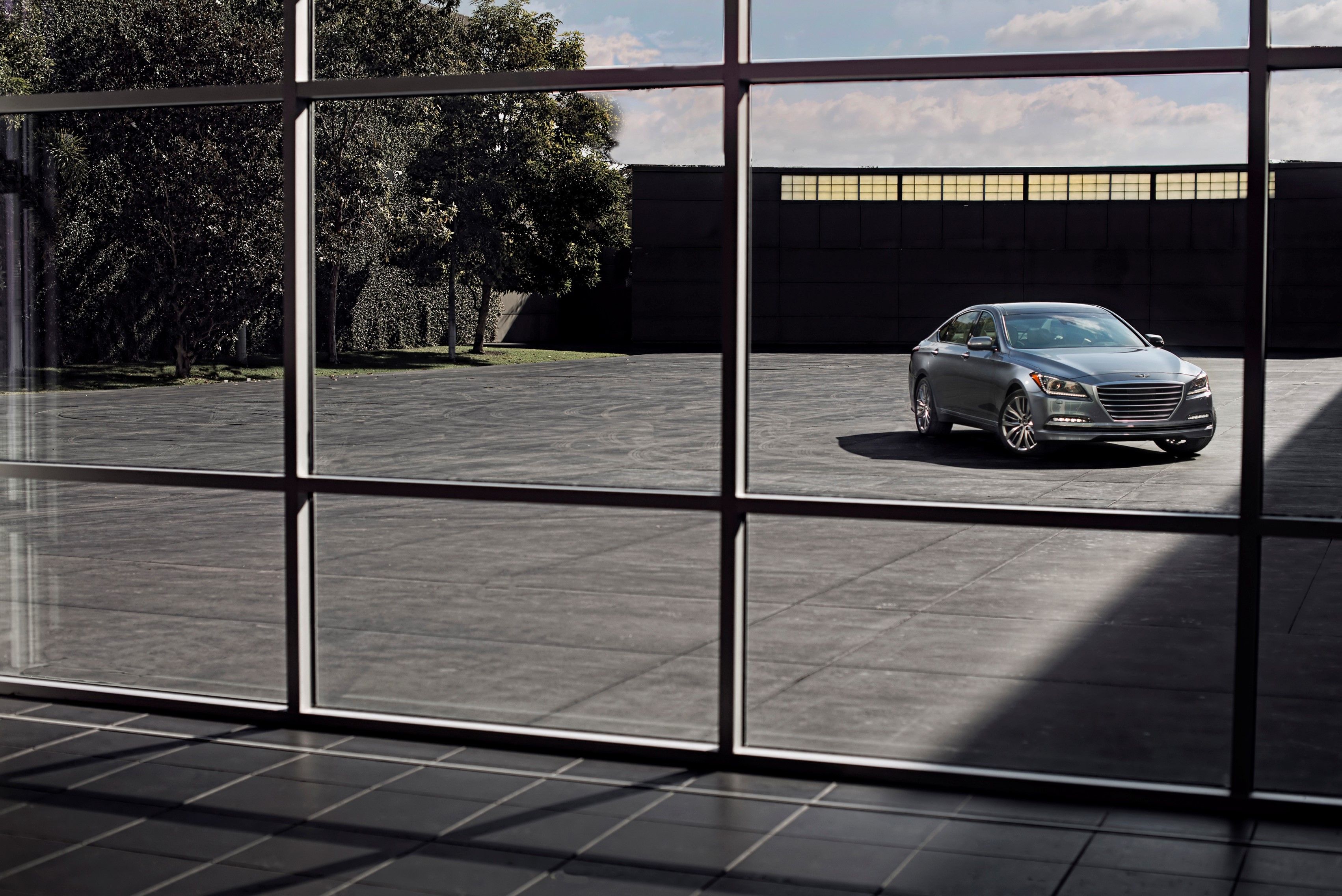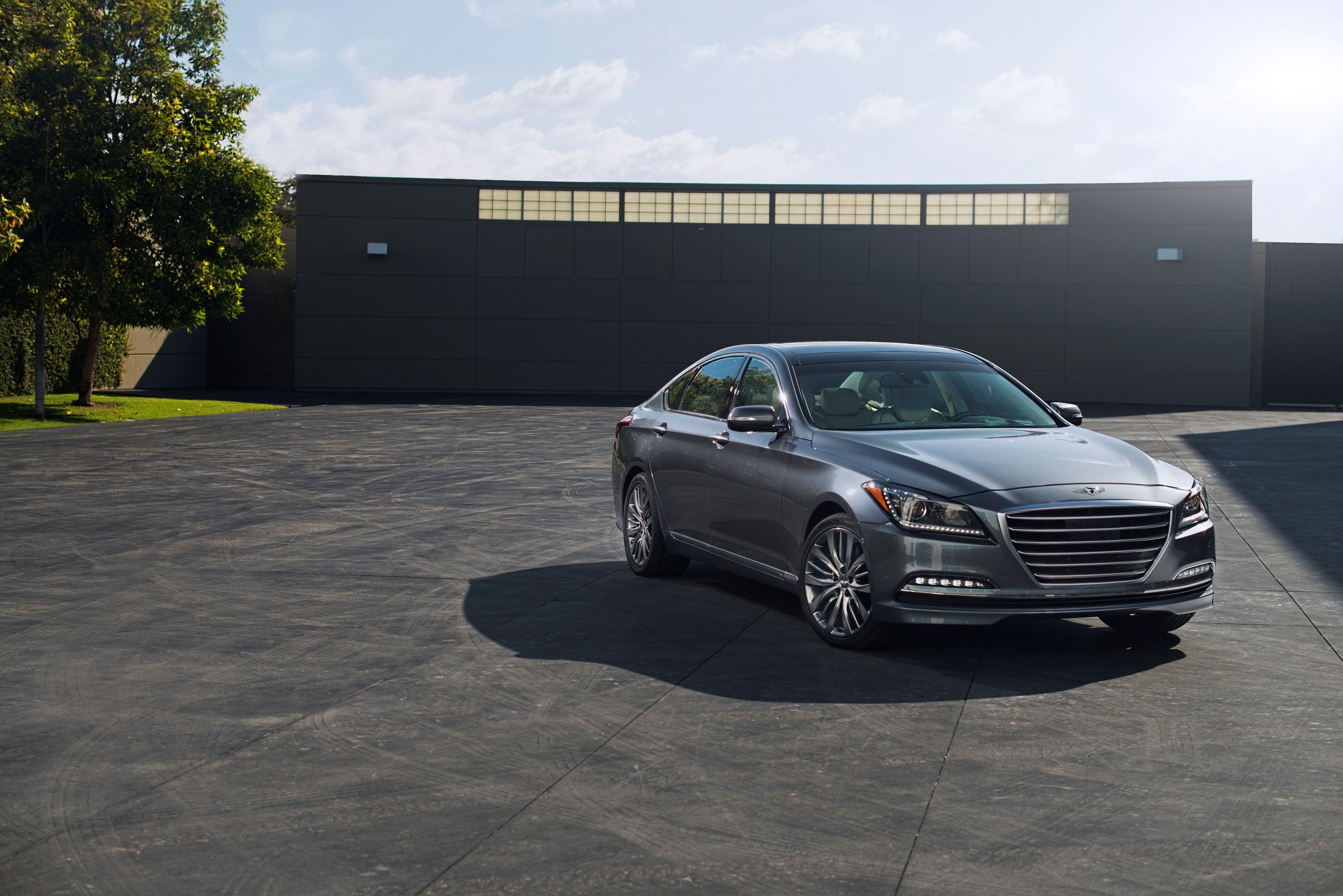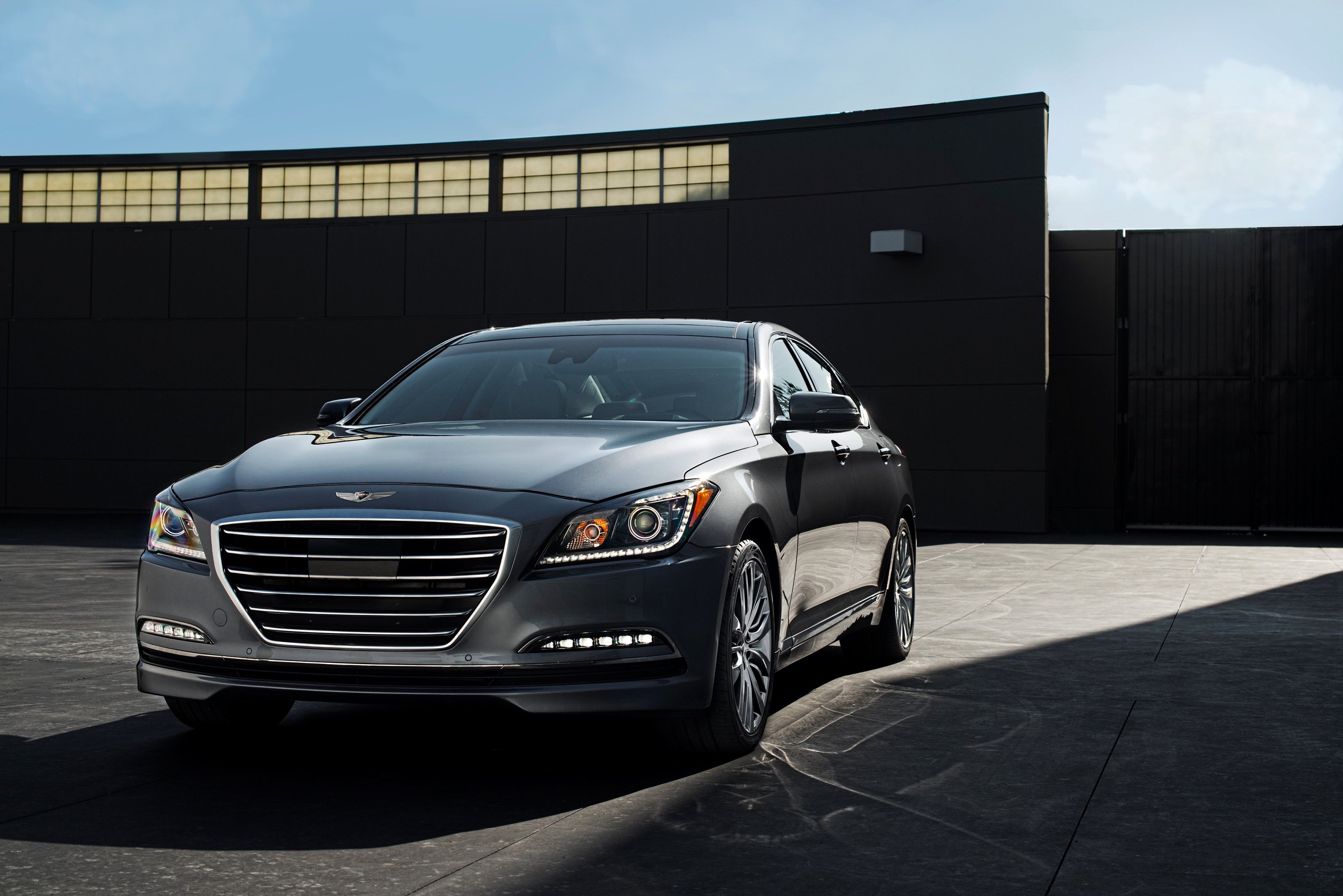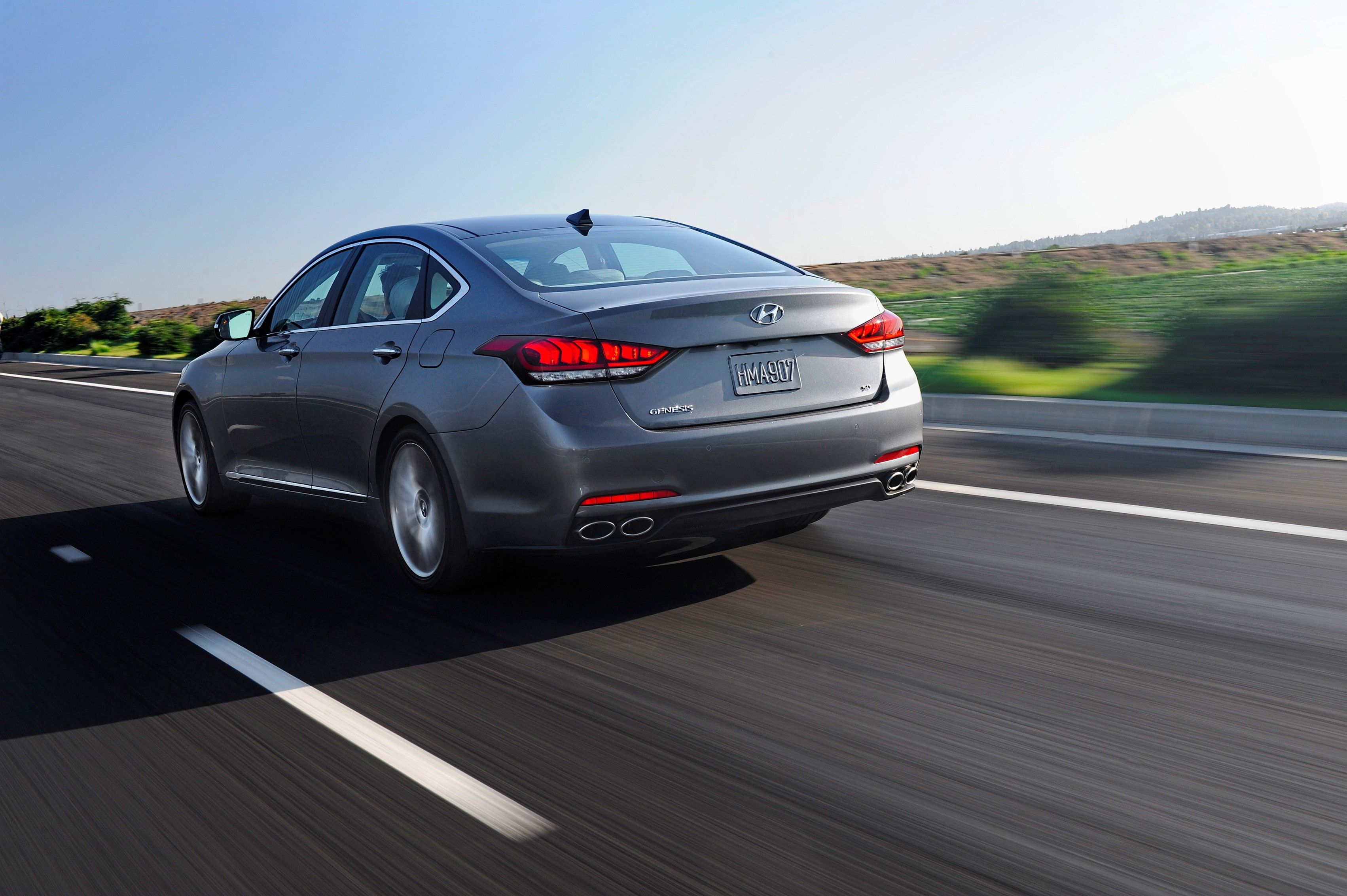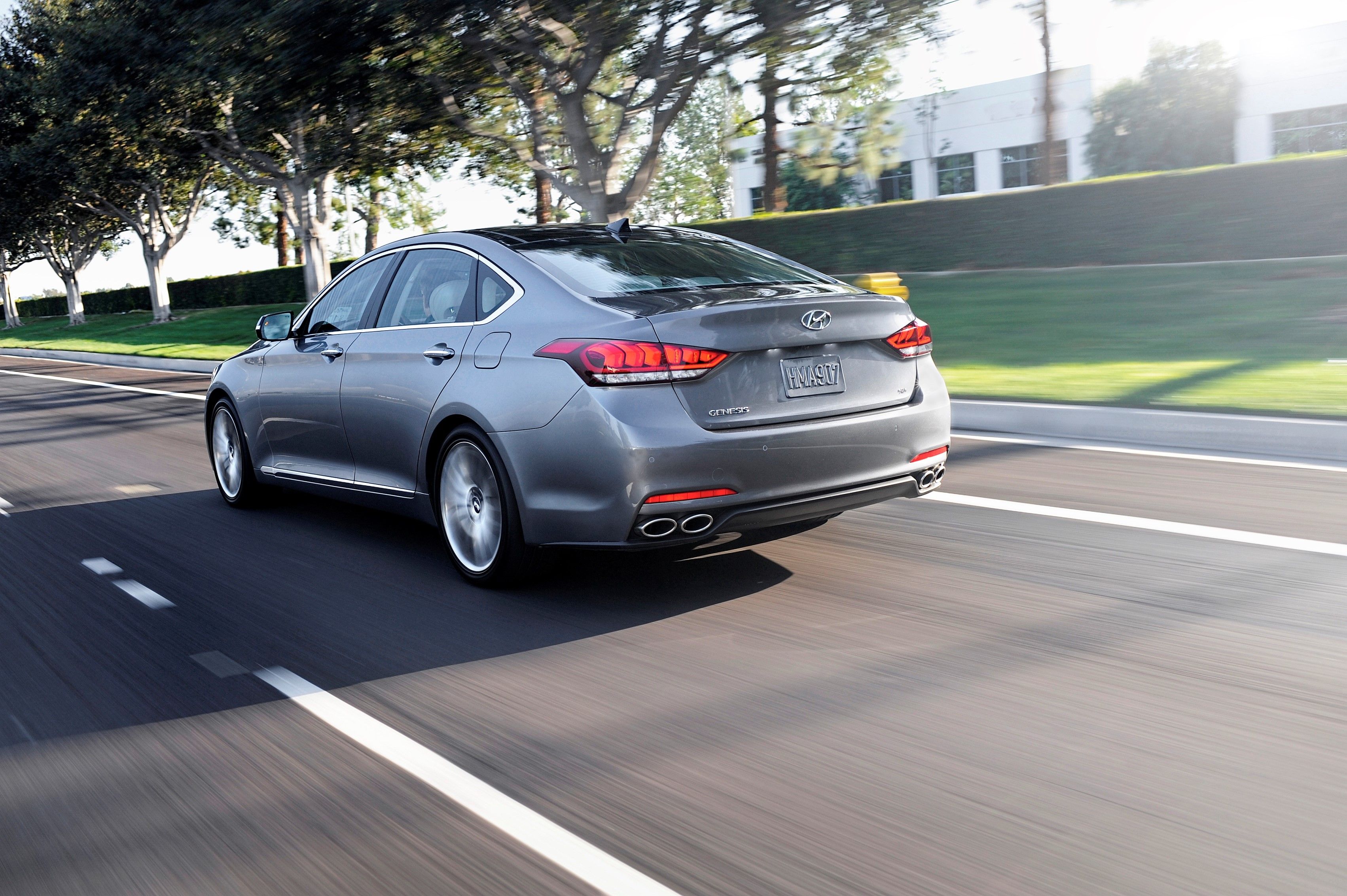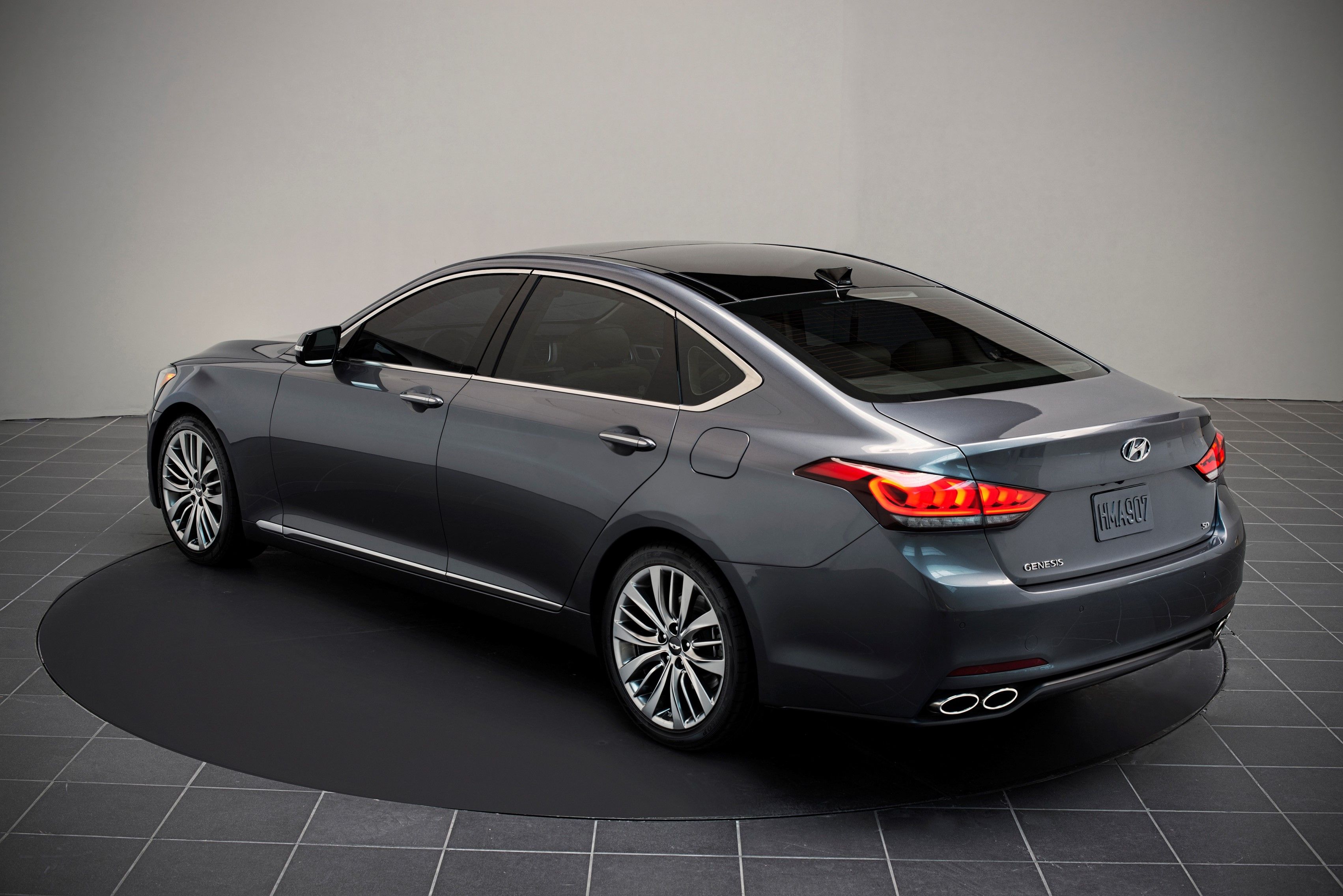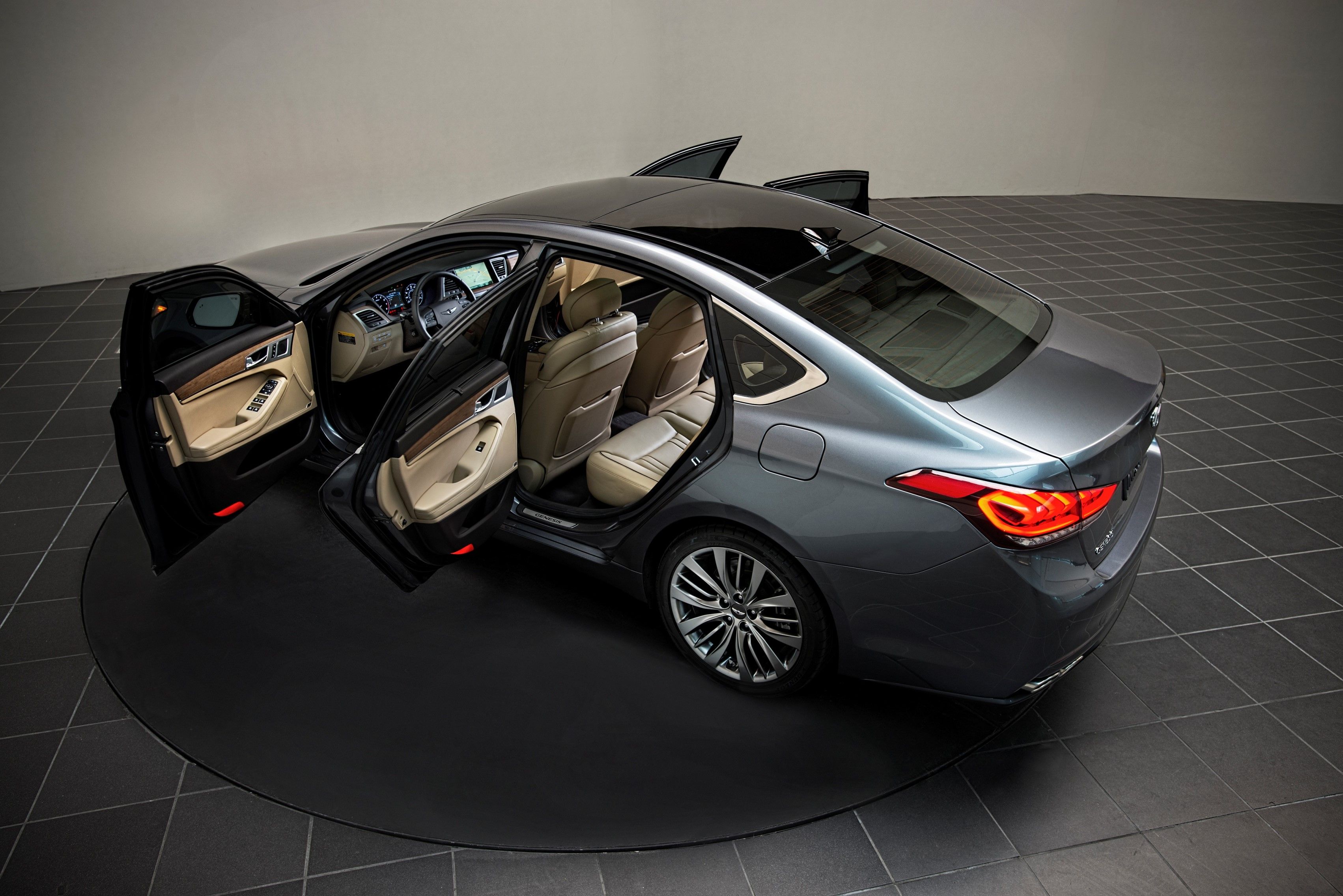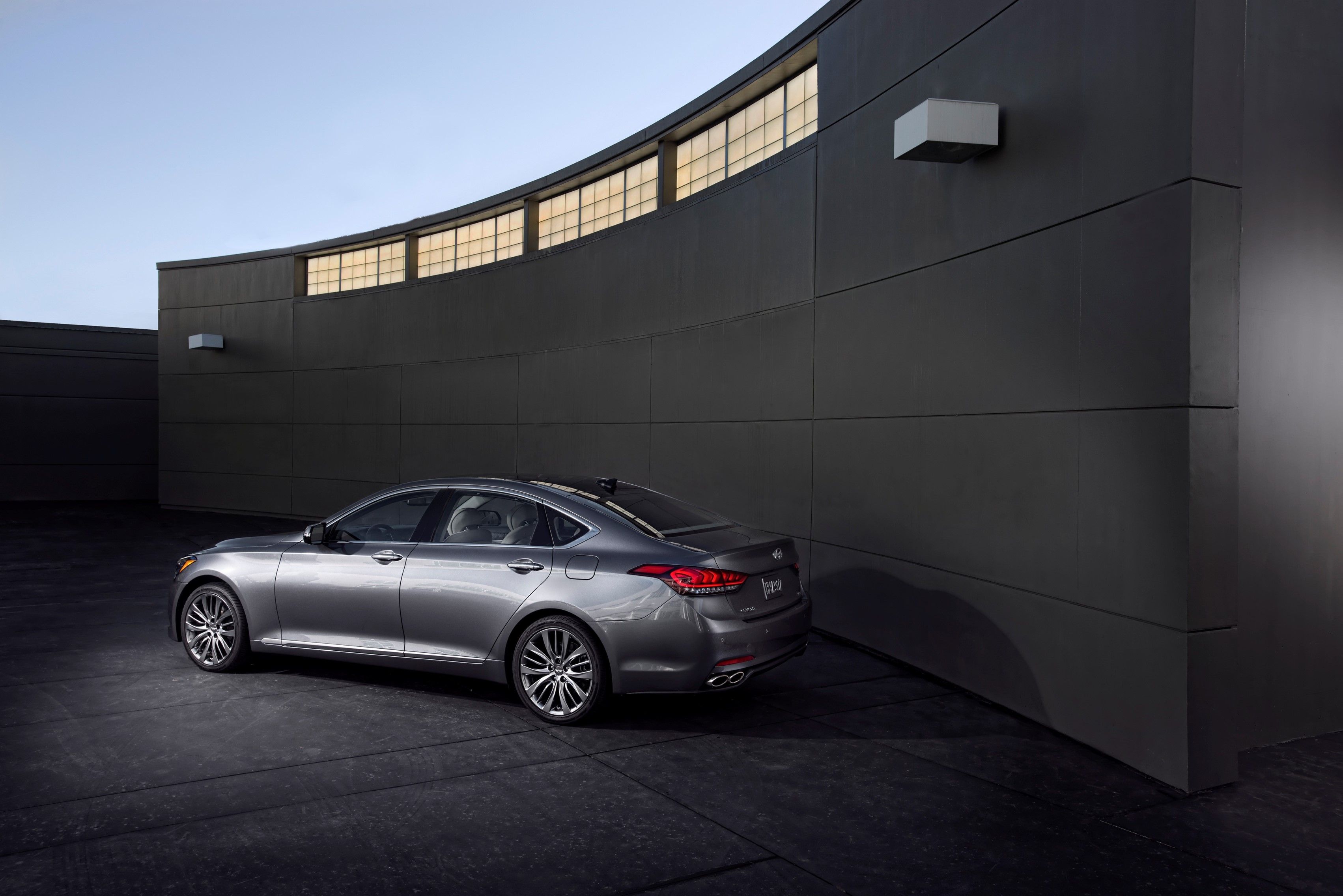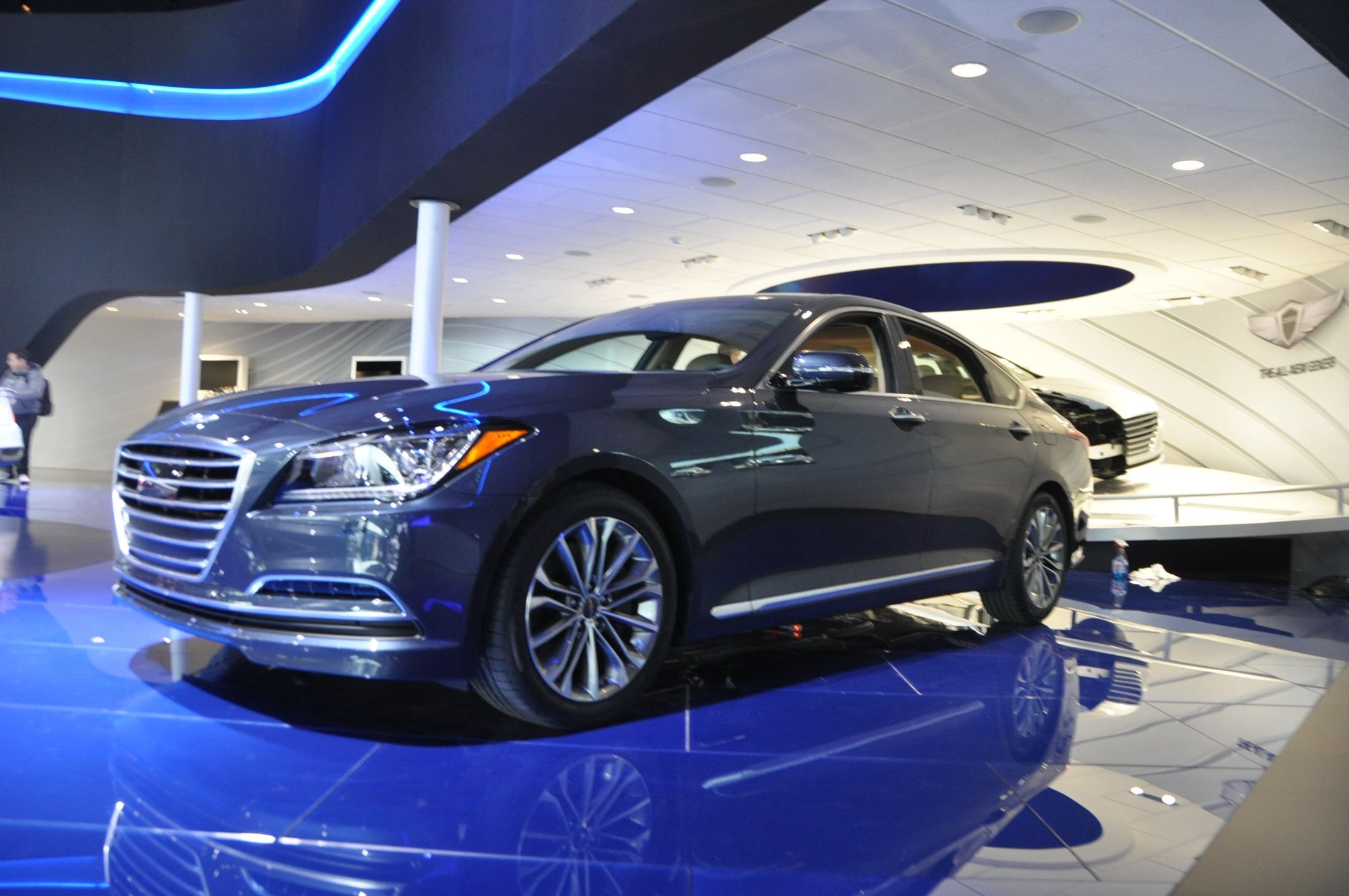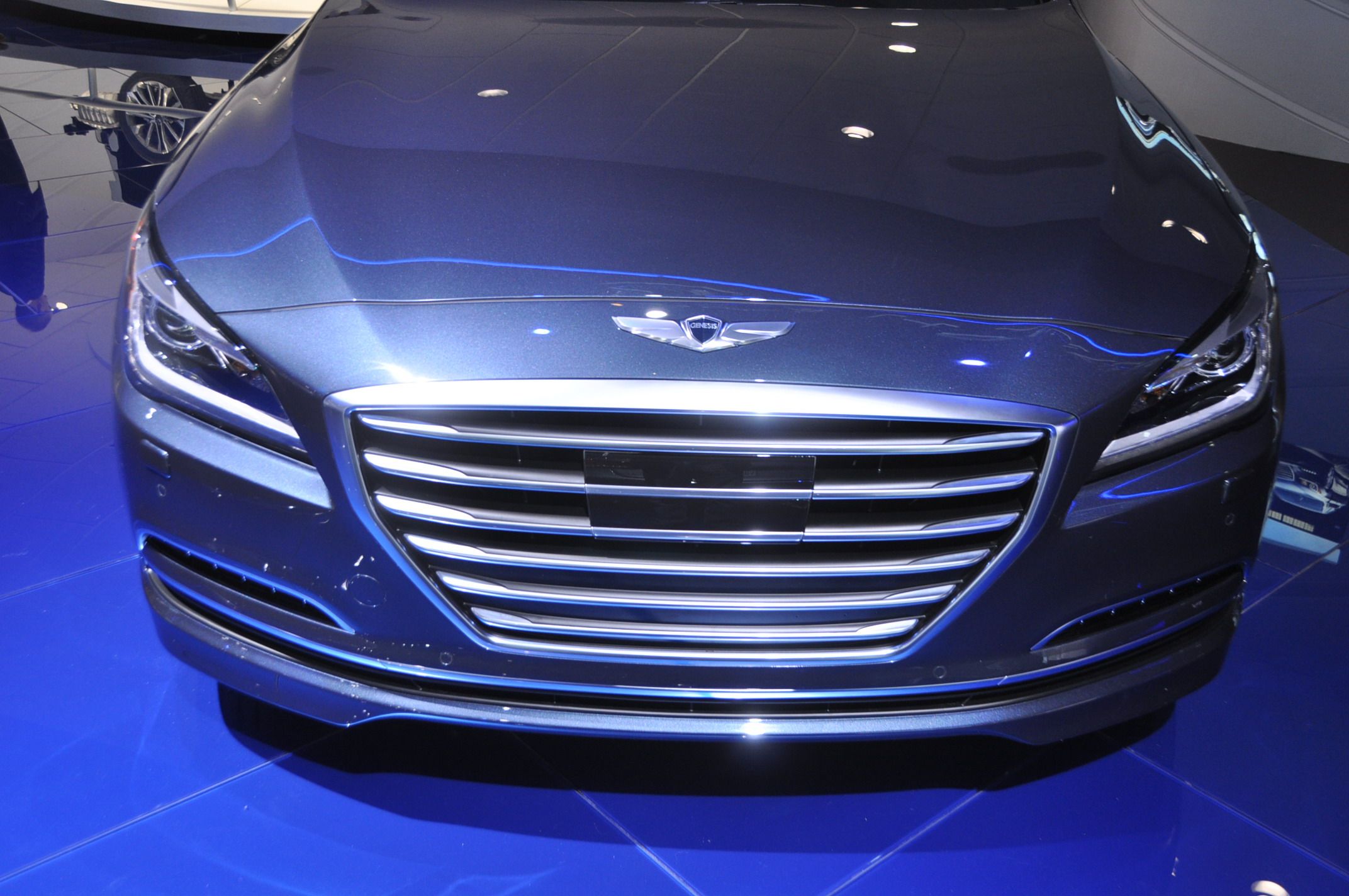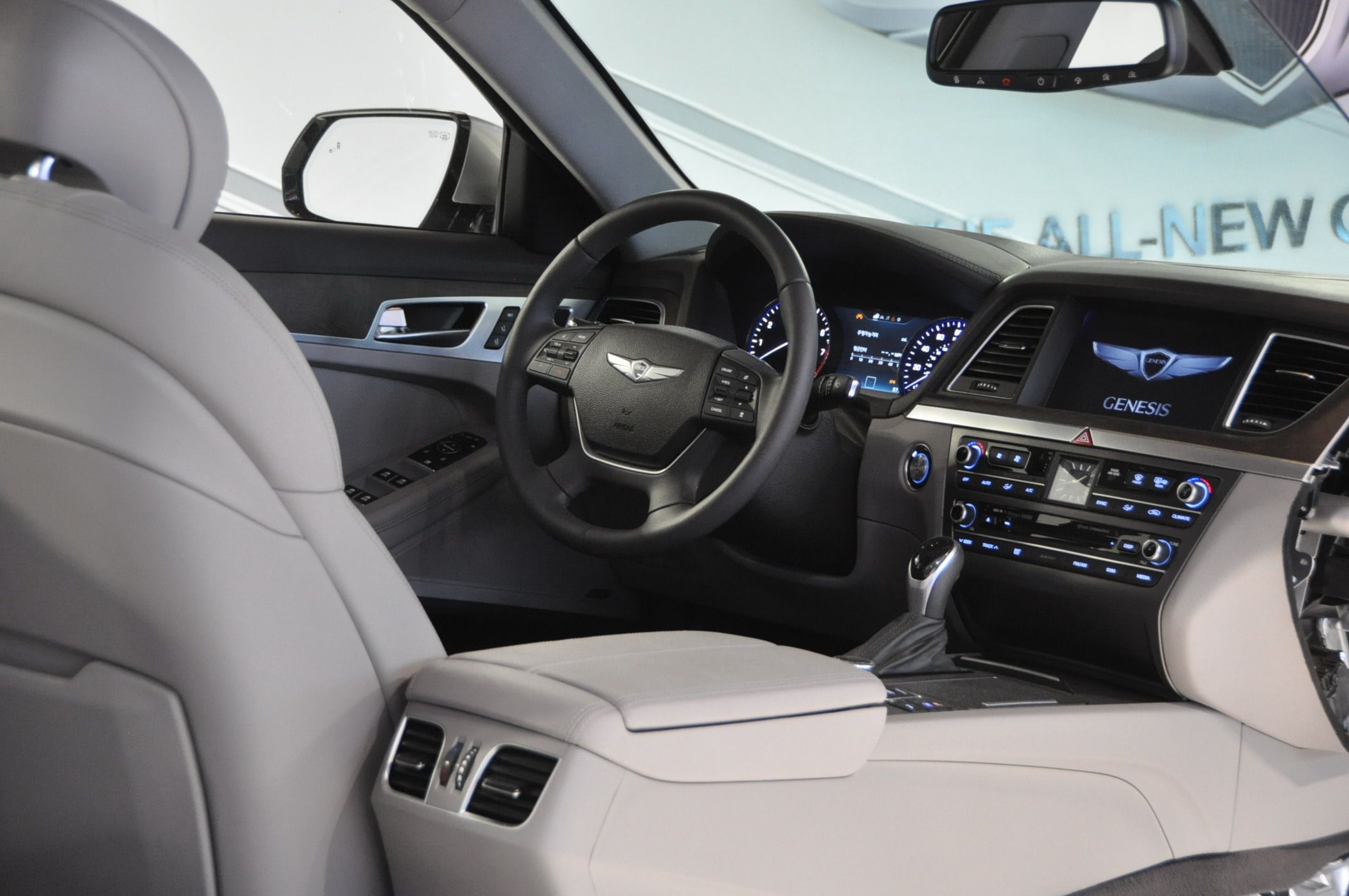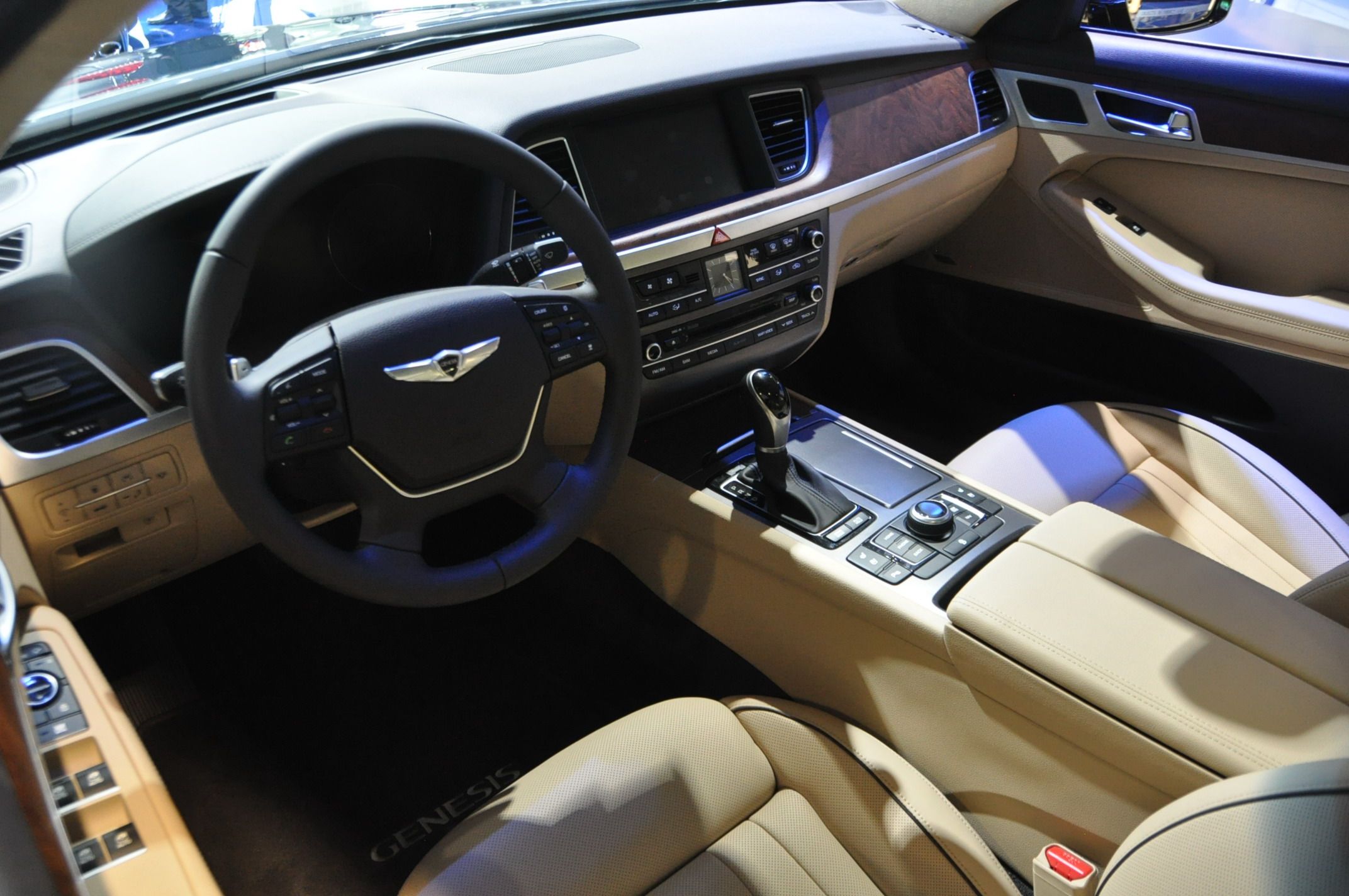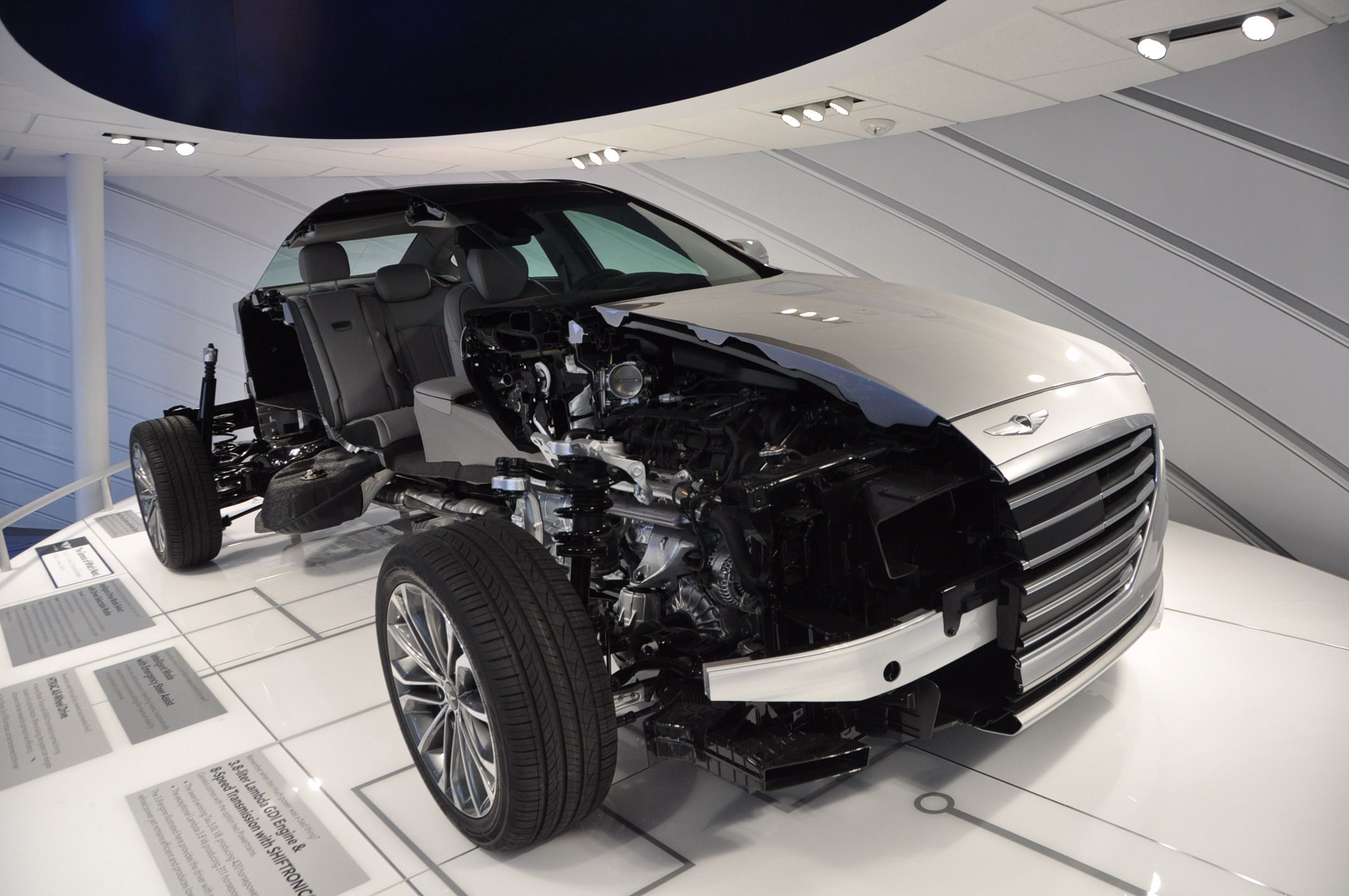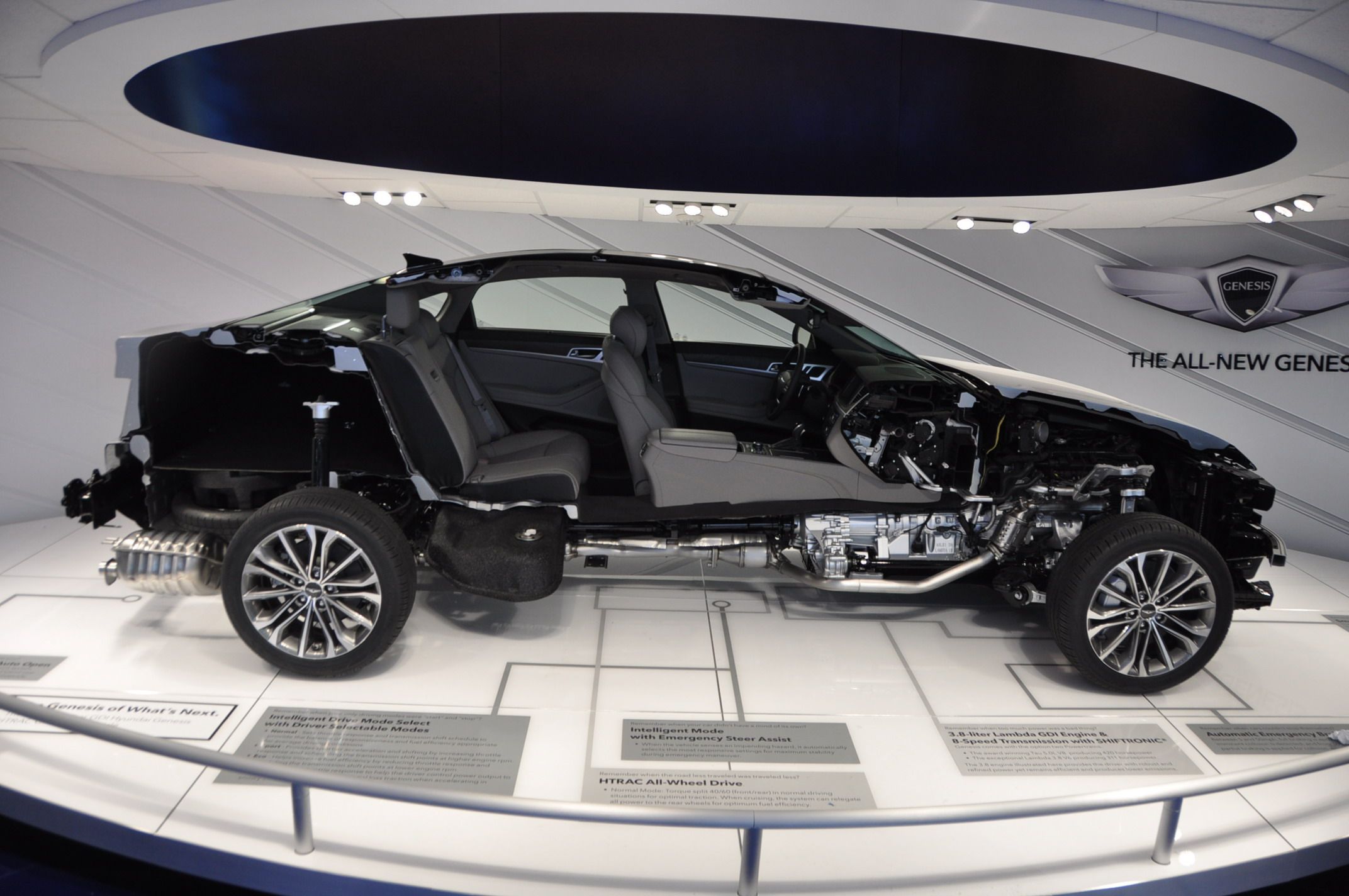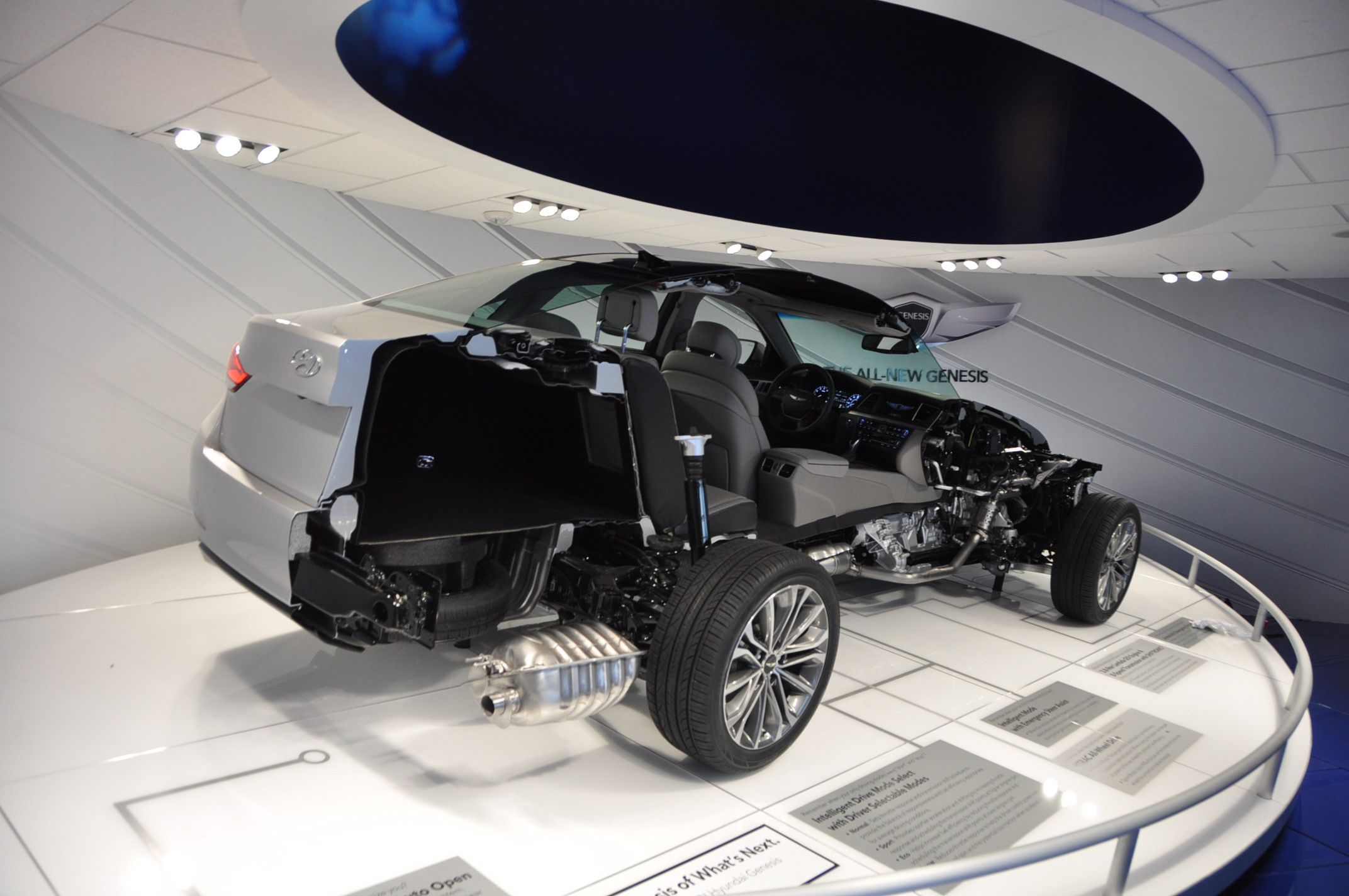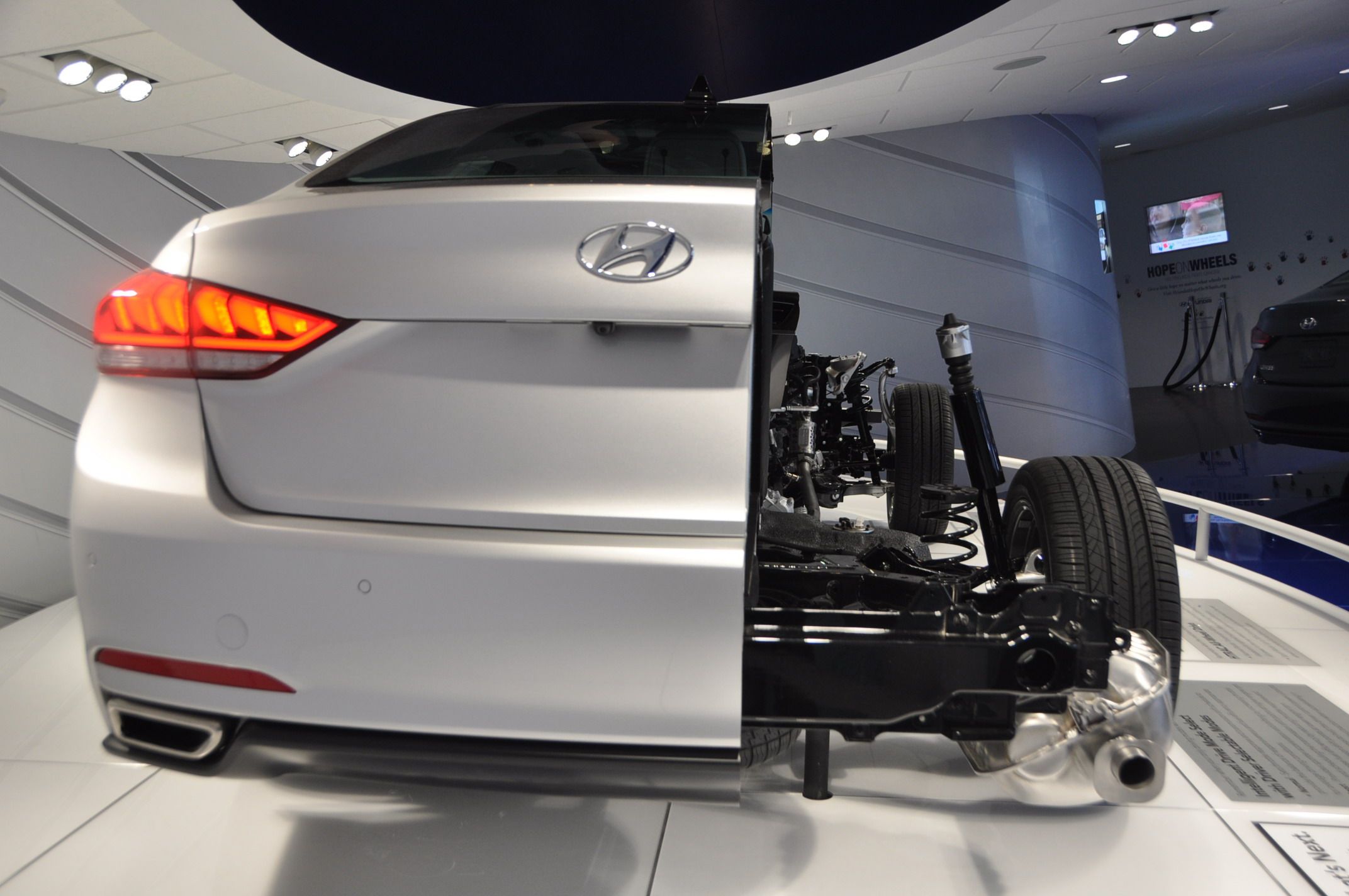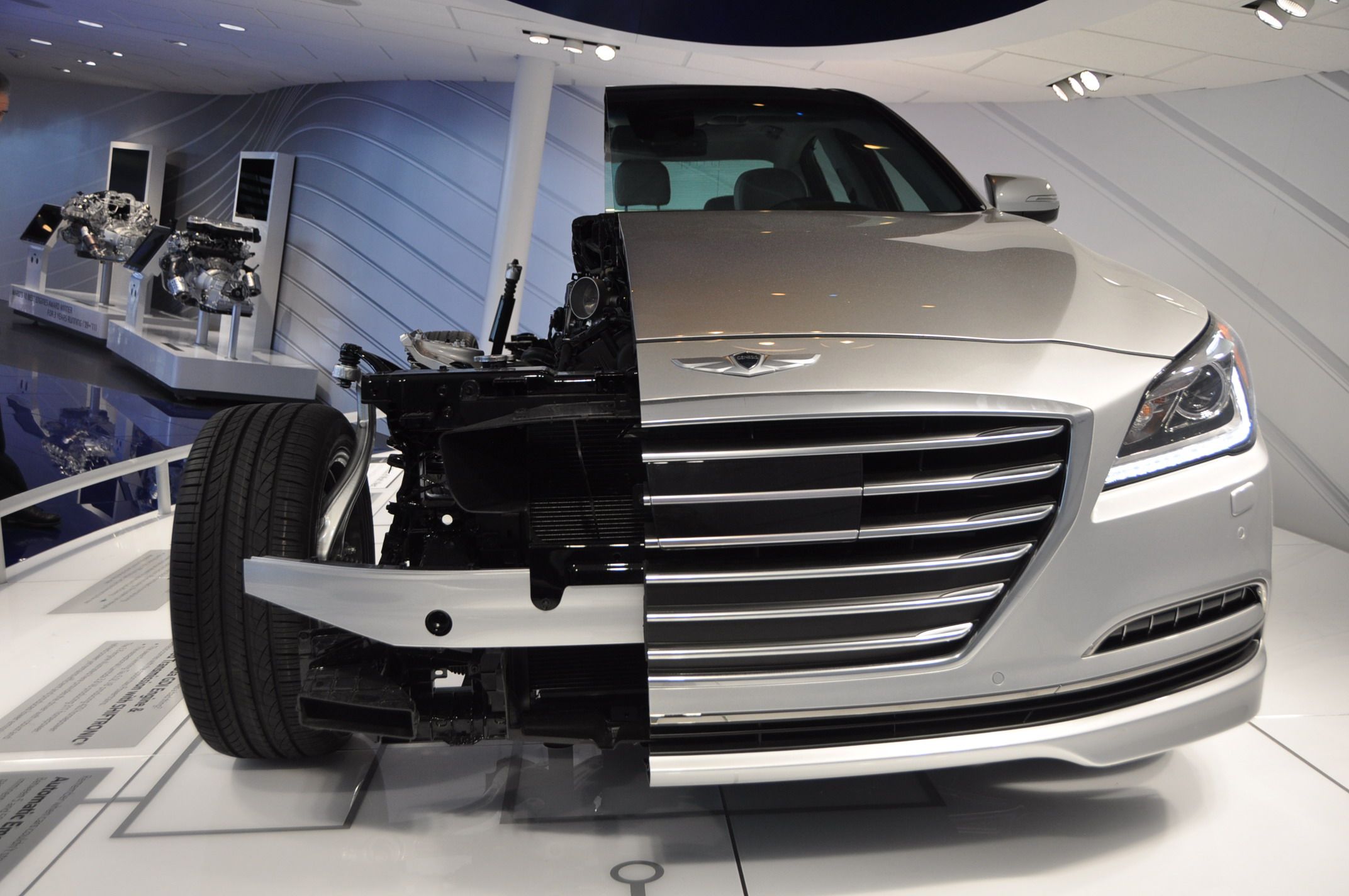As Hyundai->ke201 found its way into a more premium market, it decided it would begin taking on more luxurious automakers. In doing so, it introduced the Hyundai Genesis->ke2924 – a model that was said to be aimed at the BMW 5 Series->ke317. For the 2015 model year, Hyundai introduced the second generation of its rear-wheel drive luxury vehicle boasting a redesigned exterior that rivals that of its German counterparts and an interior that is superior in terms of comfort and appearance. Highlights on the outside include a redesigned grille with an aggressive front fascia, a sculpted side profile, and a sporty rear end that makes you wonder why there is a Hyundai badge on the decklid. Inside, the car comes standard with heated, 12-way adjustable front seats, double-stitching for the leather upholstery, and the option for aluminum and matte-finished wood on the dash. Under the hood, things get even more impressive with a 311 horsepower V-6 or a surprising 5.0-liter V-8 with 420 horsepower.
It might seem odd to think about a Hyundai with more than 400 horsepower, but the brand made it a reality. The Genesis name has now become its own sub-brand under the Hyundai umbrella, but the Geneses sedan lives on through the 2016 model year, where a whole new offering of luxury vehicles will grace showrooms. Until then, the Genesis sedan->ke142 and coupe->ke141 are about the best Hyundai has to offer, but how does it compete against its rivals like the BMW->ke178 5 Series and the Mercedes E-Class->ke373? Well, read our full review of the Hyundai Genesis below to find out for yourself.
Continue reading to learn more about the 2015-2016 Hyundai Genesis.
hyundai-genesis
- Make: Array
- Model: hyundai-genesis
2015 - 2016 Hyundai Genesis
- Make: Array
- Model: 2015 - 2016 Hyundai Genesis
- Engine/Motor: V6
- Horsepower: 311 @ 6000
- Torque: 293 @ 5000
- Transmission: Eight-Speed Automatic
- [do not use] Vehicle Model: Array
Exterior
The Genesis gets noticed thanks to Hyundai’s Fluidic Sculpture design language, which is characterized by organic shapes, curved swoops, and rounded lines. Fluidic Sculpture was originally revealed in 2010 on the Sonata and Tucson, but progressed into its second evolution (Fluidic Sculpture 2.0) with the 2015 Genesis, designating the big sedan as the torchbearer for all future Hyundai styling.
You’ll find plenty of up-scale cues front to back, and it’s difficult to take issue with the way the Genesis looks. This is partly because it appears to take inspiration from its rivals – to my eye, there’s a little Audi in the grille, a little Mercedes in the headlights, and a little BMW in the profile. But that’s hardly a bad thing, and I definitely wouldn’t go so far as to say the design is a rip-off. While the look may bear outside influence, it’s still unique.
Per segment tradition, there are a variety of chrome details punctuating the exterior, including the grille surround and window surrounds. Large 18-inch or 19-inch alloy wheels fill the fenders.
Customers can choose between 10 different paint options, including Santiago Silver, Casablanca White, Caspian Black, Parisian Gray, Empire State Gray, Pamplona Red, Montecito Blue, Marrakesh Beige, Manhattan Brown, and Ibiza Blue.
For 2015, the Genesis received a longer wheelbase and shortened overhangs, while 2016 brought standard HID headlights and LED daytime running lights. 2016 models equipped with the 3.8-liter engine also get LED fog lights.
Exterior Dimensions
|
Wheelbase |
118.5 Inches |
|
Overall length |
196.5 Inches |
|
Overall width |
74.4 Inches |
|
Overall height |
58.3 Inches |
Interior
In order to climb to the forefront of the luxury segment, Hyundai paid close attention to the interior of the Genesis, starting with available space. Occupants will enjoy a class-leading 123 cubic-feet of interior volume, with 107.7 cubic-feet of passenger volume and 15.3 cubic-feet of cargo volume. Of course, this includes plenty of nooks and crannies for things like sunglasses and mobile device storage.
New features for 2015 include a reshaped steering wheel and simplified switchgear for easier operation. Hyundai even employed the use of a laboratory tool to measure “occupant operational force” for easier functionality. Several surfaces were also revised to reduce reflective glare while still appearing bright. Cushioning and seat ergonomics were improved as well.
Up front, you’ll find heated, 12-way adjustable power seats with four-way lumbar support. An available air-pressure pump and controller valve can also be equipped to the driver’s seat for better bolster adjustment. Options include front ventilation and heating for the rear bench.
Attractive double-stitching and standard leather upholstery is used for a premium look and feel, while buyers can opt for materials like aluminum and matte-finished wood for the dash. Cabin NVH (noise/vibration/harshness) is reduced thanks to things like a stiffer chassis, better mounts, a low-noise fuel pump, improved sealing, and lots of sound insulation.
The list of features for comfort and convenience is long and elaborate. There’s a hands-free feature that automatically pops the trunk if the key is detected near the rear for more than three seconds, which means no kicking under the bumper if your arms are full of packages. There’s also an electronic parking brake that will automatically hold the car from rolling forward in stop-and-go traffic, giving your foot another rest. Smart entry and a push-button starter are standard.
For a little fighter pilot-style gadgetry, there’s an available heads-up display, which projects important info like road speed, safety system warnings, navigation directions, posted speed limit, and audio settings onto the windshield, allowing the driver to keep her eyes on the road. Behind the wheel is a standard 4.3-inch TFT LCD cluster display, which can get upgraded to a 7.0-inch diameter unit.
The Genesis comes equipped with Hyundai’s second-generation Blue Link Telematics and Infotainment Suite, which integrates things like Apple’s “Eyes Free” mode, Pandora radio, SoundHound, sports scores and schedules, a stock ticker, movie times, gas prices, weather reports, and screen-swipe technology. There are also several interesting options depending on which packages are equipped.
Let’s start with the stereos. Standard equipment is a Lexicon seven-speaker sound system, with Bluetooth connectivity, HD radio, satellite radio, hands-free infotainment control, and app-support software. From there, you can step up to either a 14-speaker or 17-speaker system, both from Lexicon, with Discrete 7 Surround processing, a 12-channel amplifier, and a 900-watt output.
Standard navigation uses an 8.0-inch touchscreen, but an optional 9.2-inch HD display is also offered. This upgraded unit comes with 720p resolution, a 64-GB solid state drive, Gracenote album art, and media storage via a USB connection. It also offers junction view and lane guidance, which outlines the appropriate lane to use when the highway splits.
Blue Link also pairs with your mobile device to offer features like destination search, remote start, remote stop, remote climate control activation, remote defroster, automatic collision notification, and SOS Emergency Assistance.
Finally, there’s the Genesis Intelligent Assistant App, which can send a variety of notifications and services directly to the owner’s smartphone. These include integration with real-time traffic info and your calendar for recommended departure times and appointment reminders. The app will also use your zip code for recommended remote climate control heating or cooling, plus gas station recommendations. Users can also use the app to schedule service appointments.
Interior Dimensions
|
Head room |
|
|
Front |
41.1 Inches (without sunroof); 39.4 Inches (with sunroof) |
|
Rear |
38.2 Inches |
|
Leg room |
|
|
Front |
45.7 Inches |
|
Rear |
35.0 Inches |
|
Shoulder room |
|
|
Front |
58.3 Inches |
|
Rear |
57.1 Inches |
|
Hip room |
|
|
Front |
55.7 Inches |
|
Rear |
54.8 Inches |
Drivetrain
Comfort and convenience are both very important, but this segment also demands heart-pounding performance at the drop of a hat. To that end, Hyundai brought the Genesis to a variety of race tracks around the world, including the company proving grounds in California, the Korea International Circuit in Yeongam, and of course, that inimitable benchmark of all road-car performance, the Nürburgring in Germany. Lotus Engineering was also called upon to offer help in the developing the suspension and chassis.
The Genesis offers two basic engine packages – an entry-level 3.8-liter V-6, or a much beefier 5.0-liter V-8. The six-cylinder makes 311 horsepower at 6,000 rpm and 293 pound-feet of torque at 5,000 rpm, while the eight-cylinder makes 420 horsepower at 6,000 rpm and 383 pound-feet of torque at 5,000 rpm.
Features of the 3.8-liter “Lambda” V-6 include an aluminum block and head, a three-stage variable intake system, a triangular-pattern fuel injector, a variable-vane two-stage oil pump, direct injection, iridium-tipped spark plugs, Dual Continuously Variable Valve Timing (D-CVVT), and an 11.5:1 compression ratio. It’s also capable of running on regular 87-octane fuel. Mileage is rated at 18 mpg city, 29 mpg highway, and 22 mpg combined for RWD models, and 16 mpg city, 25 mpg highway, and 19 mpg combined for AWD models.
Then there’s the 5.0-liter “Tau” V-8, which made Ward’s Ten Best Engines list on three separate occasions. This powerplant features an optimized runner intake length, upgraded multiple-injection mapping, camshaft carriers and a roller timing chain for greater valve train stability, and a higher 11.8:1 compression ratio. Like the six-cylinder, the eight also has D-CVVT, and it can run on 87-octane fuel. Unfortunately, the V-8 is only offered in the top-range Ultimate trim level for the 2016 model year. Mileage is rated at 15 mpg city, 23 mpg highway, and 18 mpg combined.
Both engines are mated exclusively to Hyundai’s in-house developed eight-speed automatic transmission, which comes with a Shiftronic manual shift mode and steering wheel-mounted paddles.
Both the V-6 and the V-8 can be had with RWD, while the V-6 is also offered with AWD. The AWD system uses electronic variable torque split for maximum traction, plus it offers several driving settings. The AWD system also only weighs 165 pounds.
Chassis And Handling
For the 2015 model year, Hyundai redesigned the Genesis platform to use over 50 percent ultra-high-strength steel, offering 16 percent higher torsional rigidity and 40 percent more bending rigidity. The new construction makes for one of the most rigid bodies Hyundai has ever produced. It also decreases interior NVH thanks to stiffer mounting points. Further refinement comes courtesy of laser welds and new manufacturing techniques like hot stamping and dipping.
The 2015 model year also saw the inclusion of a new multi-link suspension in the rear, supposedly upping both performance and comfort. The setup uses a five-link geometry and offers more travel, stiffer settings, and reduced camber angles when cornering.
Up front, the shock towers are made from aluminum, and there’s a diamond-shaped strut bar for better rigidity. There’s also a Rack-mounted Motor Driven Electric Power Steering (R-MDPS) system that offers a variable gear ratio for either high-speed stability, or low-speed sharpness.
Buyers who opt for the 5.0-liter engine can spring for the Continuous Damping Control suspension, which offers several settings for either softer comfort or stiffer control.
Throwing the anchor are four-wheel disc brakes, with 13.6-inch rotors for models with the 3.8-liter engine, and 14.2-inch rotors for models with the 5.0-liter engine. Both have four-piston fixed monobloc calipers.
Finally, there are four driver-selectable driving modes – Eco, Normal, Sport, and Snow. Each tweaks settings for the transmission, throttle response, stability control, suspension, and the AWD system (if equipped).
Drivetrain Specifications
|
Type |
DOHC 24-valve V6 with CVVT (Continuously Variable Valve Timing) |
DOHC 32-valve V8 with CVVT (Continuously Variable Valve Timing) |
|
Materials |
Aluminum block / aluminum cylinder heads |
Aluminum block / aluminum cylinder heads |
|
Displacement |
3.8 liters / 3,778 cc |
5.0 liters / 5,038 cc |
|
Horsepower |
311 HP @ 6,000 RPM (Regular fuel) |
420/407 HP @ 6,000 RPM (Premium/Regular fuel) |
|
Torque |
293 LB-FT @ 5,000 RPM (Regular fuel) |
383/372 LB-FT @ 5,000 RPM (Premium/Regular fuel) |
|
Bore and Stroke |
96.0 mm x 87.0 mm |
96.0 mm x 87.0 mm |
|
Valves per Cylinder |
4 |
4 |
|
Compression Ratio |
11.5:1 |
11.8:1 |
|
Fuel System |
Gasoline Direct Injection |
Gasoline Direct Injection |
|
Intake System |
Variable Intake System (VIS) |
Tuned Intake System (TIS) |
Safety
The Genesis is a very safe car, earning a top “Good” rating in each of the Insurance Institute for Highway Safety’s five crash rating categories, as well as the IIHS Top Safety Pick+ designation.
Standard equipment includes electronic stability control, vehicle stability management, traction control, nine airbags, four-wheel ABS, brake assist, electronic brake-force distribution, and a rear-view camera.
Additionally, there’s a variety of active safety technologies available, including automatic braking, adaptive cruise control, lane-keep assist, automatic high/low beam headlights, parking assist, and rear cross-traffic alert.
Interestingly, Hyundai also offers a cabin CO2 sensor, which automatically circulates the air if CO2 levels are too high (high CO2 could lead to drowsiness).
Prices
The 2016 Genesis goes on sale November of 2015.
Pricing starts at $38,750 for 2016 models equipped with a V-6 and RWD. For the 2015 model year, V-6 and RWD starts at $38,000, while AWD starts at $40,500. For a V-8, prepare to dish out at least $51,500 (only available with RWD).
3.8 Signature Package
Adds a sunroof, Integrated Memory System, power tilt-and-telescopic steering wheel, automatically dimming side-view mirrors, rear cross-traffic alert, 14-speaker sound system, HID headlights, parking guidelines, power rear sunshade and manual rear side shades, and ventilated seats.
Pricing is $4,000.
3.8 Tech Package
Adds ultra-premium leather upholstery, power driver seat cushion extender and side bolster, lane-departure warning, lane-keep assist, adaptive cruise control, haptic feedback steering wheel, automatic braking, electronic parking brake, pre-safety seatbelts, automatic high/low beam headlights, parking assist, and a 7-inch TFT LCD cluster display.
Pricing is $3,500.
3.8 Ultimate Package
Adds matte-finish wood and aluminum trim, heads-up display, premium navigation with 9.2-inch display, 17-speaker sound system, power trunk lid, and dual-mode vent control HVAC with CO2 sensor.
Pricing is $3,500.
5.0 Ultimate Package
Adds Continuous Damping Control suspension, heads-up display, premium navigation with 9.2-inch screen, 17-speaker sound system, power trunk lid, and dual-mode vent control HVAC with CO2 sensor.
Pricing is $3,250.
|
Model |
Engine |
Transmission |
MSRP |
|
3.8L RWD |
3.8L V6 |
8-Speed A/T w/ SHIFTRONIC |
$38,000 |
|
3.8L AWD |
3.8L V6 |
8-Speed A/T w/ SHIFTRONIC |
$40,500 |
|
5.0L RWD |
5.0L V8 |
8-Speed A/T w/ SHIFTRONIC |
$51,500 |
2016 Hyundai Genesis Prices
|
Model |
Engine |
MSRP |
|
Genesis 3.8 RWD |
3.8L V6 |
$38,750 |
|
Genesis 3.8 AWD |
3.8L V6 |
$41,250 |
|
Genesis 5.0 RWD |
5.0L V8 |
$53,850 |
Competitors
The 5 Series has been around for over four decades, which would probably lead you to believe it’s one of the most refined vehicles in the segment. That’s still quite true, as it offers plenty of comfort inside and lots of crafty suspension tricks in the corners. There’s also a good deal of turbocharged grunt under the hood. But all this pedigree comes with a cost that’s significantly above the base-model Genesis. Pricing for the 5 Series starts at $50,200.
Read our full review here.
Technology and style find a happy balance in the E-Class, with cutting-edge driver’s aides and premium infotainment inside, plus eye-catching lines and handsome proportions outside. A huge number of drivetrain options can be had, including four-cylinder diesels, V-6s, and fire-breathing V-8s. But like the Bimmer, prepare to pay – pricing starts at $53,100.
Read our full review here.
Conclusion
Hyundai is putting a lot of faith in the Genesis. It’s the automaker’s first luxury car, and it sets the high-water mark for the rest of the lineup in terms of refinement, styling, performance, and brand recognition. What’s more, taking on the Germans in this cutthroat (yet lucrative) segment is certainly not easy, but the Genesis looks well prepared in every aspect. It’s quiet, comfortable, laden with the latest technology, and crucially, much less expensive than its European rivals.
Sure, it doesn’t bring the same prestige as an Audi, BMW, or Mercedes. But that hardly matters if you get all the goods plus an extra ten grand in your pocket.
Update History
Updated 04/01/2014: Hyundai announced today prices for the all-new Genesis that will go on sale later this month. Prices will range from $38,000 for the well-equipped 3.8 liter V-6 and $51,500 for the 5.0 liter V-8 model.
Updated 1/13/2014: Today at the 2014 Detroit Auto Show, Hyundai unveiled the 2015 Genesis sedan. You can see all of the details and images after the jump.
Updated 02/10/2014: Hyundai unveiled a new video showing the all new Genesis sedan in action on the famous Nurburgring race track. Enjoy!
Updated 4/30/2013: Per Edmunds, Hyundai has announced that it will unveil the 2015 Genesis at the 2014 North American Auto Show in Detroit. Additionally, the model will have optional all-wheel drive for the first time ever.
Update 10/24/2013: Hyundai has released a few renderings of the 2015 Genesis to the folks over at AutoBlog. You can see the front image above and the rear image after the jump.
Updated 01/07/2014: The new-generation Hyundai Genesis will be unveiled next week at the 2014 Detroit Auto Show, and before that, Hyundai hit the 2014 Consumer Electronics Show to show off its second-generation Blue Link system and the second generation infotainment system -- both will be offered on the all-new Genesis. The new Blue Link system will includes a remote starting system, remote stop, remote climate control and remote defroster. The new infotainment system will offer SD navigation, Pandora and SoundHound integration with smartphone and Apple’s Siri-powered “Eyes Free” mode, which will allow drivers to perform a variety of in-car tasks without taking their eyes off the road.
Spy Shots
Renderings
Hyundai Renderings
Above you see the front three-quarter rendering of the upcoming Genesis, and boy does it look good. Gone are the obvious Mercedes-Benz cues and in comes a more unique front end that features an upright grille and swept-back headlights. Sure, there are a few cues borrowed from other automakers, but as a whole, it is unique.
From the rear three-quarter shot, we can see wraparound taillights , a swooping roofline and a hard shoulderline that gives the Genesis an agressive, yet luxurious, look.


